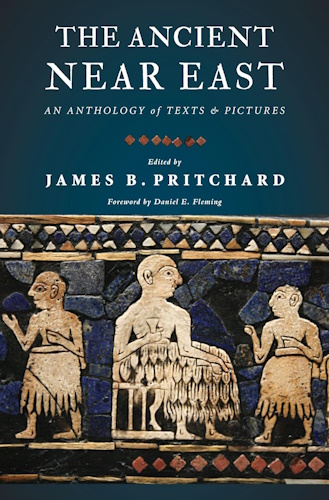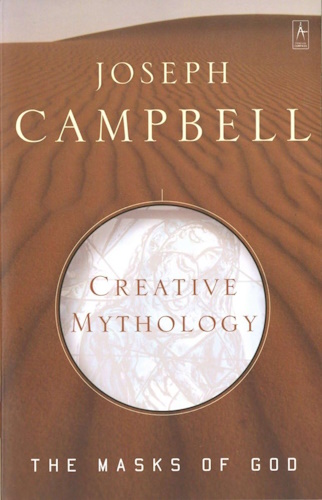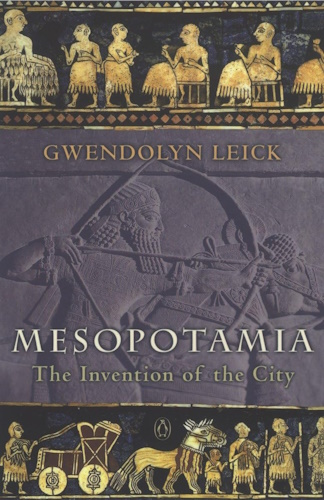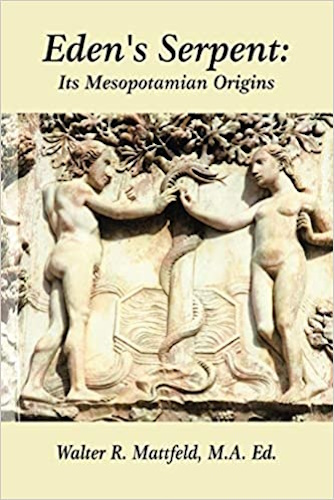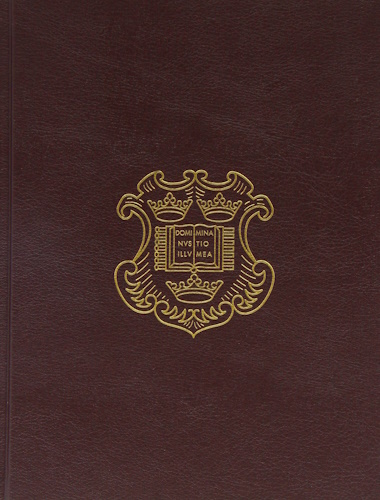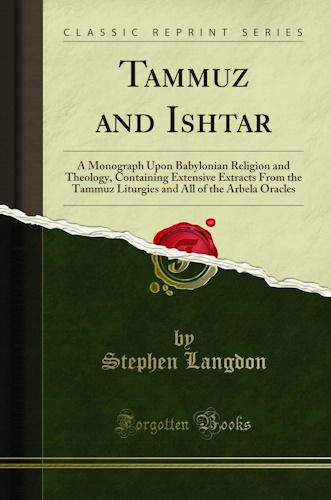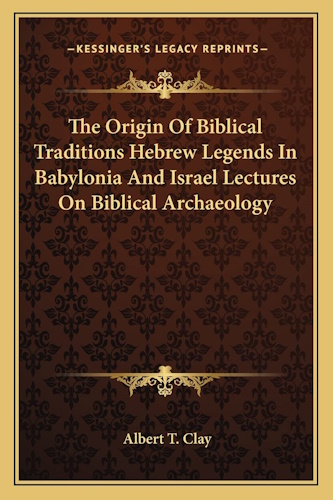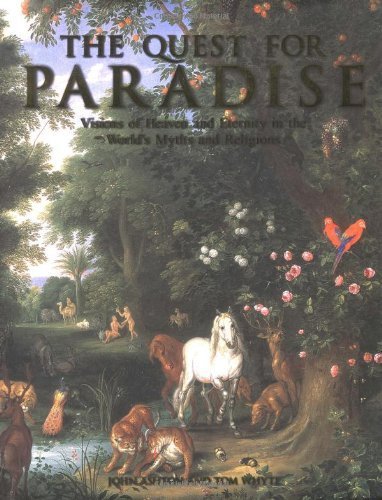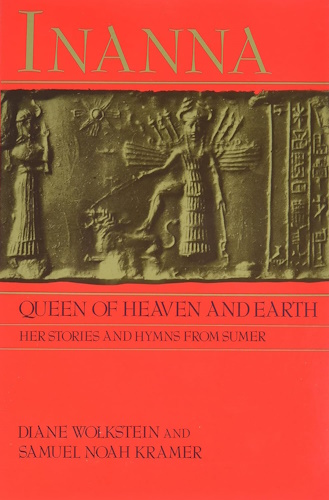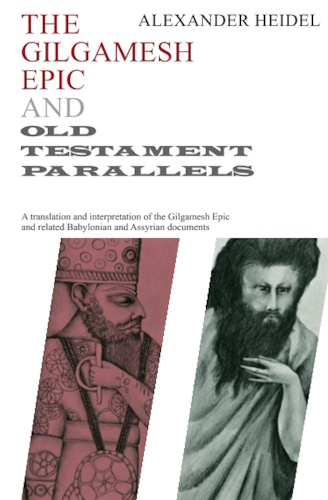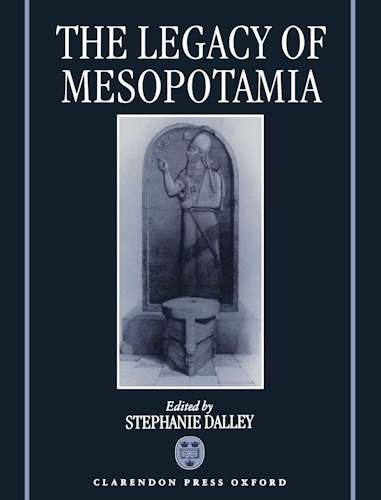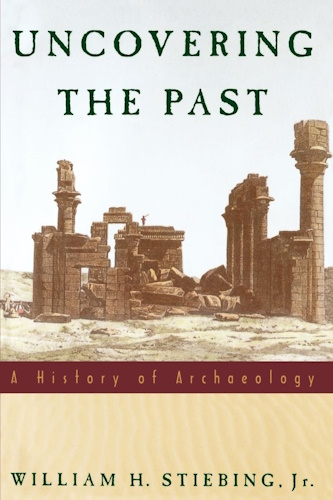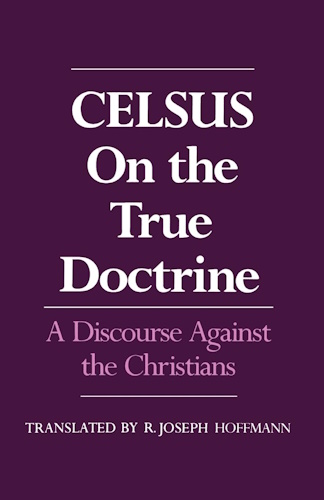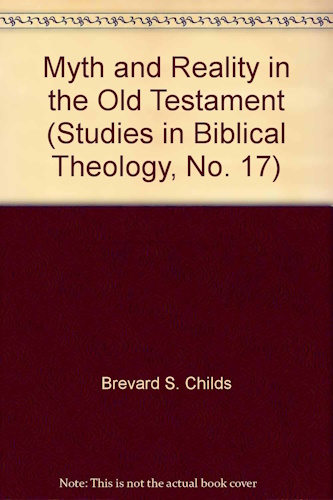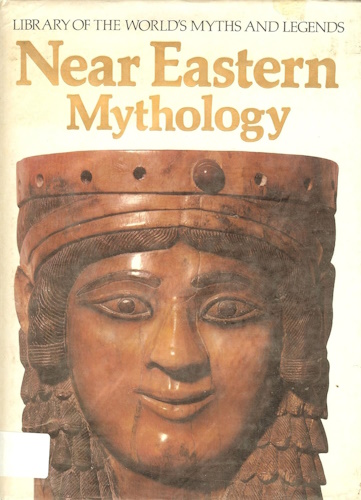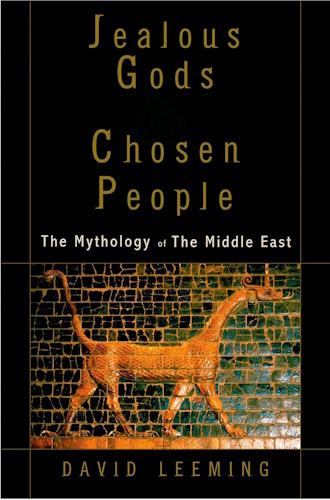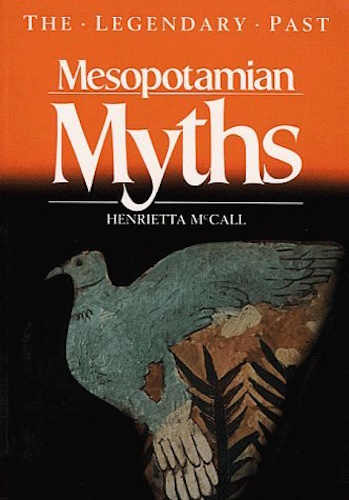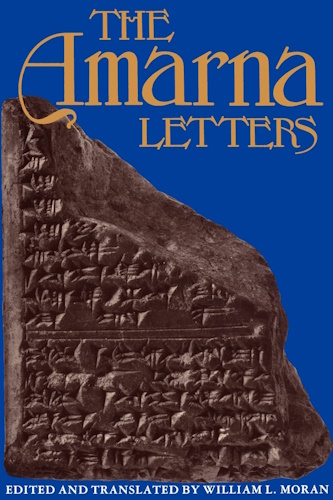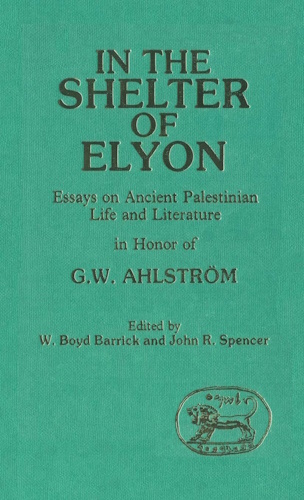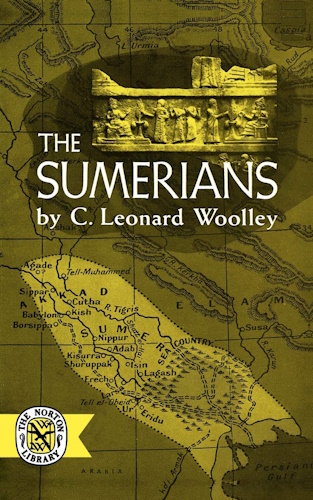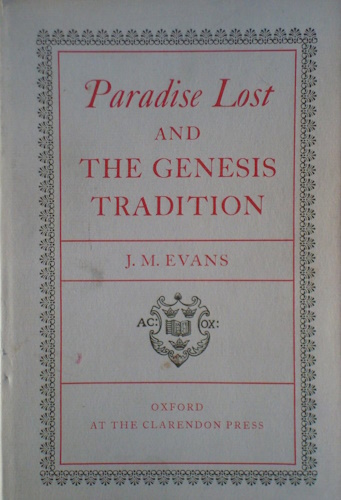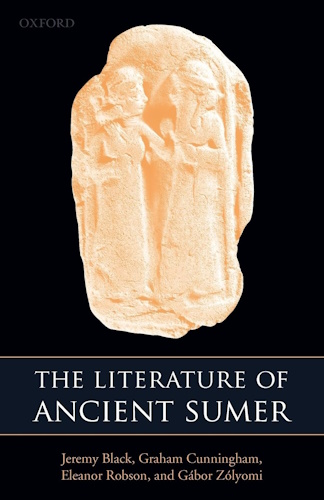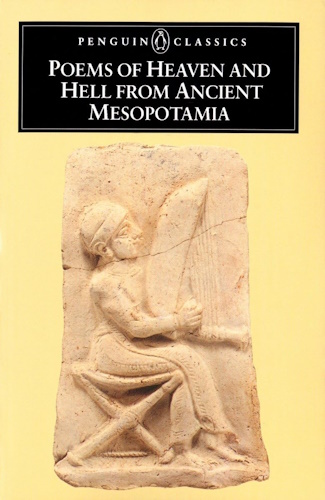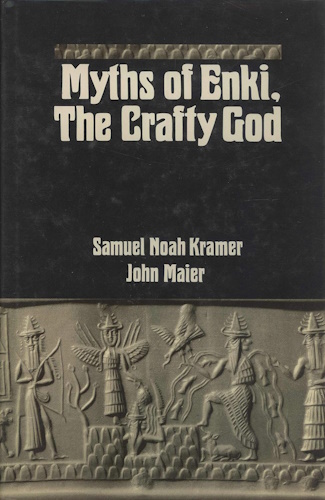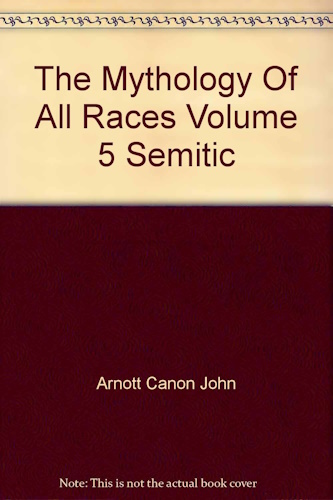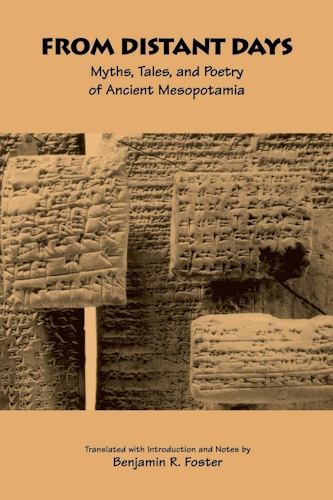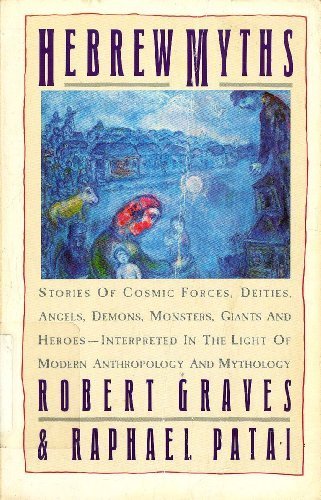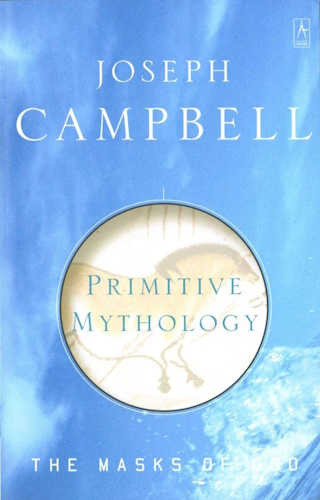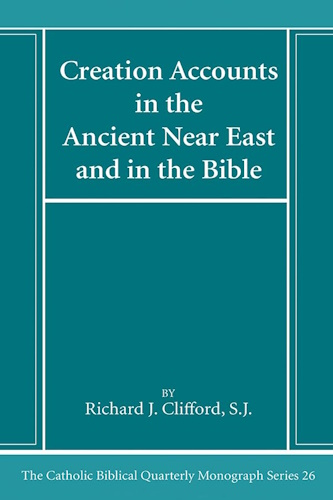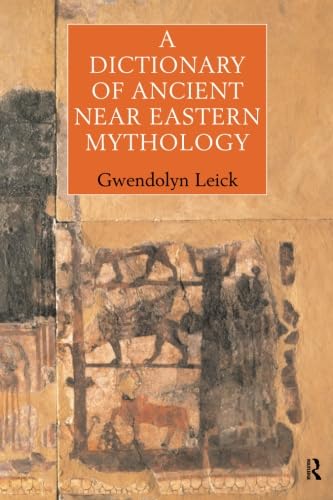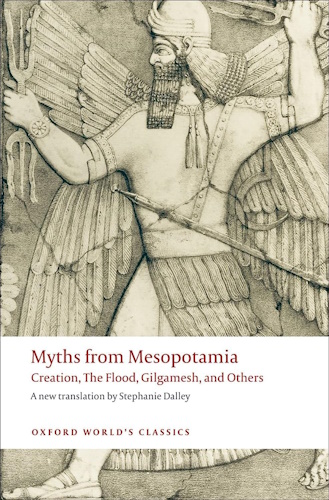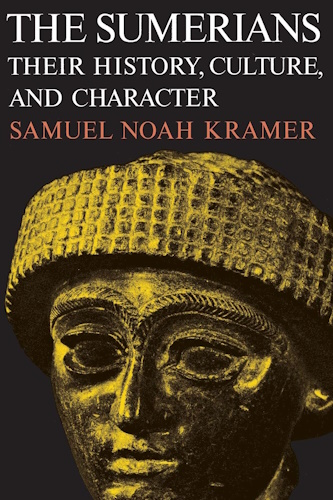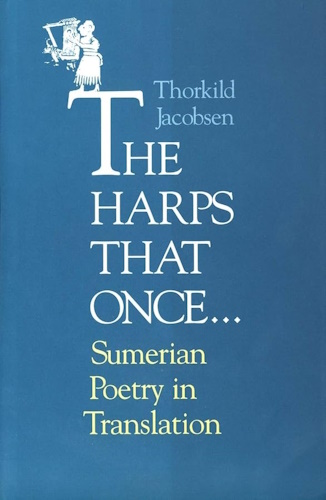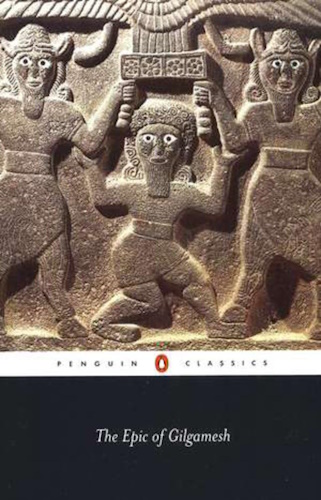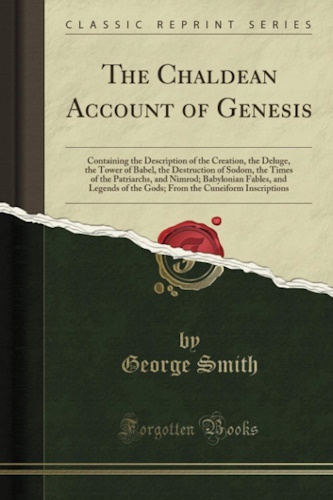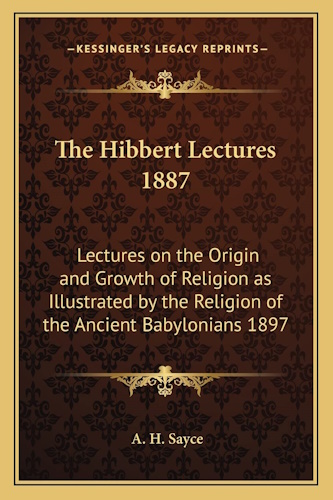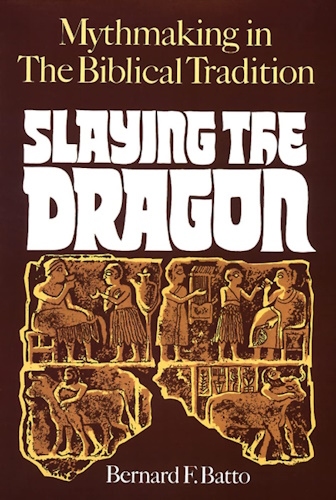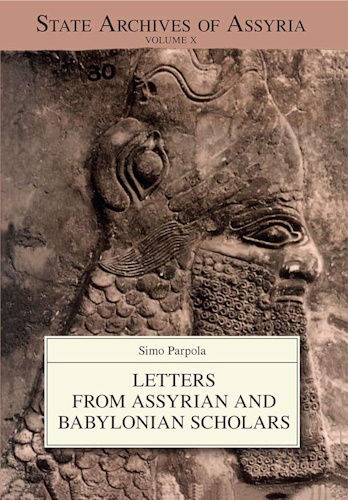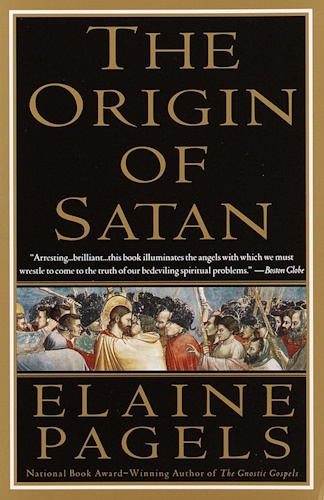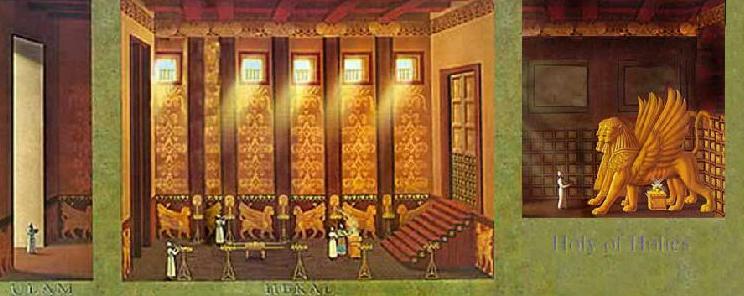![]()
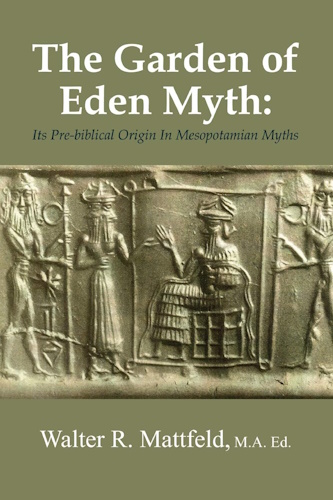
Bible Origins
Dilmun·Tilmun·Telmun
"The Sumerian Paradise"
or
Pre-biblical Prototype
for the "Garden of Eden"
has not been "correctly" identified yet
as of 2008
Part One
by
Walter Reinhold Warttig Mattfeld y d la Torre, M.A. Ed.
e-mail contact
05 February 2005
Revisions through: 26 June 2010
![]()
Please click here for Part 2
Some scholars for over 100 years have proposed that Sumerian Dilmun is possibly a pre-biblical prototype of the Garden of Eden, a place where man will enjoy immortality in Christian myths.
Please click here for Sumerian Dilmun being _Umm Daleimin_ downstream of the mouths of the Tigris and Euphrates which unite to form the Shatt al Arab at Qurnah.
Please click on the below five urls for my series of videos on locating Dilmun. On 17 October 2009 I identified Dilmun with the village of Umm Daleimin just east of Qurnah and a "possible" nearby ancient Tell (?). I also note in these videos that 30 beru for Esarhadon is 132 miles (220 kilometers) _not_ 300 miles from the head of the Persian Gulf to the island of Bahrain/Dilmun as proposed by Professor Andrew Kitchen. Each link brings you to a YouTube Video I composed. I _urge_ you to view _all_ of them as they possess "new" information _not_ presented here.
Video One, Video Two, Video Three, Video Four, Video Five
This article in a nutshell:
It will be argued that Dilmun's location has _not_ yet been successfully identified. Its current scholarly identification does _not_ meet: (1) the textual or (2) archaeological criteria and (3) the distance of 30 beru to Dilmun is _not_ met. If scholars have failed to find a location that meets (1) the textual descriptions and (2) has no archaeological evidence of a city in continued existence and occupation from circa 3300 B.C. to 538 B.C. when it appears in texts, and (3) it is _not_ 30 beru from Sumer, why then, are they claiming they have "found" Dilmun?
Many scholars today understand that the "land of Dilmun" or "city of Dilmun," believed to be a type of Sumerian "Paradise" and thus a possible pre-biblical prototype of Genesis' Garden in Eden mentioned in Mesopotamian documents from the 4th-1st millenniums B.C. constitutes three locations: (1) the northeastern littoral of Arabia from the vicinity of Kuwait to Bahrain; (2) the island of Bahrein or Bahrain and (3) the island of Failaka in the Persian Gulf. This brief article explores the reasoning behind this notion and concludes that the Mesopotamian inscriptions describing Dilmun/Telmun/Telwun (as well as the lands of Meluhha/Melukhkha and Magan/Makan), have been _misunderstood_ by scholars and that in fact these locations probably lie in or near the marshlands of Lower Mesopotamia, between Sumer and Elam. This article also reveals that some scholars have _misunderstood_ the terminology 30 beru and the distance it represents (its roughly 220 kilometers or 132 miles according to the Reallexikon der Assyriologie, scroll down for further details).
To the degree that some scholars (1881-2009) have suggested Sumerian Dilmun might be a pre-biblical prototype of the Garden of Eden it is interesting to note that Cline (2007), an Associate Professor at George Washington University, favors the area about Qurnah as being possibly the site of the Garden of Eden citing earlier research by the late Professor Ephraim A. Speiser (1959) of the University of Pennsylvania at Philadephia:
"I would follow Speiser and suggest that the Garden of Eden, if it existed, is most likely to have been located somewhere in the region of Mesopotamia and the Fertile Crescent, perhaps even near the site of Querna..."
(p. 14. "The Garden of Eden." Eric H. Cline. From Eden to Exile, Unraveling Mysteries of the Bible. Washington, D.C. National Geographic. 2007)
Dr. Theresa Howard-Carter, Ph.D. (1981) has proposed that Dilmun found in texts dated circa 3200-2300 BC is probably a yet unidentified site in the marshes between Qurna and Basra (interestingly, the very area Cline suggests the Garden of Eden might be located at):
"However, because no objects from Mesopotamia found in either Bahrain or Failaka can be dated earlier than 2200 B.C., it is impossible that Dilmun was located there before that time. Thus, as I have attempted to demonstrate here, the earliest Dilmun is most likely to have been located in the region of Qurna."
(p. 223. Theresa Howard-Carter. "The Tangible Evidence for the Earliest Dilmun." Journal of Cuneiform Studies. Vol. 33. No. 3/4 (July-October 1981). pp. 210-223)
Professor Kitchen (1994) on "clues" to identifying Dilmun, which for him, is Bahrain and the nearby eastern littoral of Arabia adjoining the Persian Gulf:
"Dilmun:
(a) Location. Identification of Dilmun with the island of Bahrain goes back to 1880 when both Oppert and Rawlinson made this proposal within months of each other...In the present state of our knowledge, there is a strong case for the identification of Dilmun with the Bahrain archipelago and including part of adjoining Eastern Arabia. The essential points made in favour of such an identification will be listed summarily for convenience.
1. In the Neo-Assyrian epoch Assurbanipal (mid- 7th century BC) claimed rule over "Dilmun which is in the midst of the Lower Sea." The latter expression is universally admitted to refer to the Gulf, and the implication is that Dilmun was an island in the Gulf. A few years previously, Esarhaddon also claimed Dilmun as his, and imposed tribute on Qanaia, king of Dilmun. Identification of Dilmun as an island in the Gulf narrows down its possible identification considerably: Failaka (near the head of the Gulf), or Bahrain and islets (just north of Qatar peninsula), or Qeshm (close to the Straits of Hormuz). A solely mainland location (whether in Arabia, Iran, India or elsewhere) would be firmly excluded at this period.
2. A generation earlier, Sargon II claimed receipt of gifts in submission from Uperi, king of Dilmun, whose hideout was located -like a fish- 30 beru distant, amidst the Sea of the Rising Sun." As the phrase "Sea of the Rising Sun" is merely a synonym (like "Bitter Sea") for the Lower Sea, and the comparison with a fish expresses island status, these reinforce the data of Assurbanipal.
3. The distance of 30 beru may provisionally be taken as reckoned from sailing clear of Mesopotamia's coastline, in practice from the mouth of the Euphrates; it may readily be taken as the sailing-time between there and Dilmun, as several writers have clearly pointed out. The figure agrees well with the 300 miles or so from the mouth of the Euphrates to Bahrain. By the same token, it excludes both Failaka (much too near to the Euphrates' mouth) and Qeshm (much too far away)."
(pp. 39-40. "Dilmun." Kenneth Anderson Kitchen. Documentation For Ancient Arabia. Part One. Chronological Framework and Historical Sources. [The World of Ancient Arabia Series] Liverpool, United Kingdom. Liverpool University Press. 1994)
The "problems" with Kitchen's analysis:
1. Kitchen fails to make mention of Sumerian texts describing Dilmun as a city possessing a _river bank_ and river docks and that there is _no river_ associated with Bahrain, Failaka and the Eastern Arabian coast.
2. Kitchen fails to mention the Sumerian god Enki reaching out of a marsh to press to his bosom maidens who stand at Dilmun's river bank.
3. Kitchen fails to mention that some scholars (Potts and Cole) have noted that the term "sea" in ancient texts can sometimes refer to a _marsh_ as well as an open sea like the Gulf. Because Kitchen is apparently unaware of this esoteric fact he wrongly assumes with many others that Dilmun must be an island in the midst of the Persian Gulf instead of a settlement in the midst of a marshland (the Sea Land or Tamti east of Sumer).
4. Kitchen associates the Euphrates' mouth with that of the Shatt al-Arab. However Professors Archibald Henry Sayce (1887) and Theophilus G. Pinches (1904) thought the Euphrates' mouth was near Ur and Eridu, the Persian Gulf ending in this area for them. Dilmun in texts was said to "lie at the mouth of the rivers" suggesting for other scholars the mouths of the Tigris and Euphrates at Qurna. In other words scholars are in confusion as to where the mouth of the rivers is: (1) Ur and Eridu; (2) Qurnah; or (3) The mouth of the Shatt al-Arab.
5. Kitchen makes no mention of Roux's (1960) map showing the Euphrates as extending from Ur to the south side of the Hor al-Hammar Lagoon and the 2d millennium BC settlements he found there in this marsh environment.
6. Kitchen fails to mention that archaeology has found no evidence of Bahrain (or Failaka, or the Eastern Coast of Arabia) being settled before 2200 BC, despite the fact Dilmun appears in texts of circa 3300 BC at Uruk.
Professor Friedrich Delitzsch (Wo lag das Paradies? 1881:173-180) argued that Oppert was in error, the Assyrian term kasbu did not mean a double-hour, consequently, he argued that Dilmun was a small islet now submerged under the silt at the mouth of the Shatt al-Arab. He cited texts that the Mesopotamian flood hero variously called Ziusudra, Atra-Khasis or Utnapishtim had been placed in Dilmun at "the mouth of the rivers" pi narati, and this "mouth" (pi) was for him the delta formed by the Shatt al-Arab. Please click here and scroll down for Delitzsch's 1881 map showing Dilmun's location. Delitzsch located Melukhkha and Magan which in texts are associated with Dilmun in the marshlands between Sumer and Elam on the same map. Please click here and scroll to page 173 to read Delitzsch's arguments on the kasbu (now called beru), which are in German.
Hastings (1907) proposed that via a "scribal mistake" Uperi was made a king's name, it was in reality, for Hastings, biblical Ophir famed for its gold. I doubt that Hastings is correct, Uperi was the king's name. What attracted my attention however is Hastings' statement that Delitzsch understood that the Assyrian kasbu (today render as beru) "forced" him to identify Dilmun as an islet now submerged under the silt at the mouth of the Shatt al-Arab. Apparently Delitzsch _disagreed_ with his colleagues as to kasbu's (beru's) meaning"?
Hastings on proposals for Dilmun by Rawlinson and Delitzsch:
James Hastings. Editor. The Expository Times. Vol. 18. Oct. 1906 to Sept. 1907. (pp. 234-235. Edinburgh, Scotland. T. & T. Clark):
"The geographical position of Dilmun (more correctly Tilmun or Tilwun), an Arabian district adjoining the Persian Gulf, has been misconceived owing to an erroneous translation by Delitzsch of a passage referring to it in in inscriptions of Sargon. Delitzsch has been followed by Winckler, the result of the mistranslation being a series of geographical difficulties which have proven insurmountable. Dilmun has been supposed to be an island, which Rawlinson identified with Bahrein on acount of an inscription which had been found there, while Delitzsch was forced by the length of the Assyrian kasbu to make it some islet which has long since been absorbed by the growth of the silt at the head of the Persian Gulf...Sargon (of Assyria) speaks of the Kalda territory of Bit-Yakin in the marshes at the mouth of the Euphrates as 'extending to Dilmun' (adi pat Dilmuni).
The passage on which the misconception of the geographical position of the country has rested is the following (Sarg. Ann. 369-370, Khors. 144): Uperi sar Dilmuni sa malak xxx. kasbu ina qabal tamdim nipikh samsi kima nuni sitkunnu narbatsu, 'Uperi, king of Dilmun, whose place of retreat was made like that of a fish, at a distance of 30 kasbu in the middle of the sea,' where the relative has been supposed to refer not to the king, but to the land of Dilmun, regardless of the comparsion with a fish. What the passage really means is that Uperi fled to an island in the Persian Gulf, which was situated at a distance of 30 kasbu from the coast of Dilmun, and may, therefore, easily have been the island of Bajrein, where a cuneiform inscription informs us that Nebo was worshipped under his Dilmunite name of Enzag (see Rawlinson in The Journal of the Royal Asiatic Society, xii.2, New Ser. 1880).
In early cuneiform texts Dilmun, Melukhkha and Magan are enumerated together, the order of the names being reversed by Gudea (Div. 2-12), who gives it as Magan, Melukhkha, Gubin, and Dilmun. Melukhkha, 'the salt desert,' represented Arabia Petraea, and has long since been recognized as the equivalent of the Biblical Havilah. In Magan (Semitic Makannu) the Sinaitic Penninsula and the adjoining land of Midian, with its old port of Makna, have equally been long recognized. Assur-bani-pal, it is true, uses Magan as a synonym of Egypt, but this is because the Sinaitic Penninsula was an ancient province of Egypt, and was the first to be approached in a campaign from the east.
Dilmun, Melukhkha and Magan thus represented to the early Babylonians northern Arabia, proceeding from east to west. Dilmun adjoined Babylonia on the south-west, and stretched along the western coast of the Persian Gulf where the port of Gerrha was a great emporium of trade. In the passage quoted from the Annals of Sargon I believe, as I stated some years ago in the Proc. S.B.A. 1896, p. 174, that the Assyrian scribe has mistaken 'the king of Uperi in Dilmun' (sar Uperi sa Dilmun), and that Uperi is really the Ophir of the Old Testament and the port from which the king of Dilmun fled before Sargon to an island in the sea.
After Dilmun came Melukhkha, the Gubin of Gudea being otherwise unknown. Like Havilah, Melukhkha extended to the frontier of Egypt and adjoined Magan, which denoted north-western Arabia, just as Dilmun (with its port of Uperi), Melukhkha, and Magan would thus correspond with the Ophir, Havilah, and Jobab of Genesis 10:29, which folow Sheba or South Arabia...I need only add that the correct pronunciation of Dilmun is shown by variants to have been Tilmun or Tilwun and consequently the island of Tylos, in the Persian Gulf, may have retained a reminiscense of the name as Oppert suggested."
Rice (1994) accepts the present scholarly consensus that Dilmun is to be associated with the eastern littoral of Arabia (from Kuwait to Bahrain) and the islands from Bahrain to Failaka and he apparently has also accepted Kitchen's observation that scholarly consensus is agreed that the epithet "sea of the rising sun" is a reference to the Persian Gulf. What I find most interesting is Rice's "warning" about taking the ancient Sumerians too literally as they portrayed Dilmun as lying in the midst of the "sea of the rising sun," and he notes that it boggles the mind that they would be so _stupid_ as to associate the Arabian Gulf (Persian Gulf) which lies almost directly south of Sumer as being to _east_ of Sumer where the sun rises daily:
"One of the most frequently employed epithets of the Gulf itself was 'the sea of the rising sun.' This demonstrates the danger of taking the ancients seriously in the matter of geographical descriptions. No one could believe the Sumerians to be so obtuse or so unobservant as to imagine that the sun rose to the due south of their land, which could be the only conclusion if 'sea of the rising sun' is to be taken literally."
(p. 11. "On the Location of Dilmun." Michael Rice. The Archaeology of the Arabian Gulf. London. Routledge. 1994)
I am going to stick my neck out here on the chopping block and aver that the scholarly consensus is in error.
The Sumerians as Rice rightly noted were not _stupid_, the "sea of the rising sun" obviously cannot be the Persian Gulf because it is almost due south of Sumer!
So then, what "sea" is due-east-of-Enki's residence at Eridu, recalling he "visited" Dilmun, blessing its fish-filled lagoon and fields of date palms and barley? Professor Juris Zarins' map (1992) reveals that adjacent to and east of Eridu is a great sebkha, the remains of a marshy lagoon or freshwater lake which existed in antiquity. Perhaps this body of water is "the Sea of the Rising Sun" as Eridu's inhabitants, facing the east at sunrise would see the sun appear to rise from the lagoon? Enki in hymns speaks of his abzu shrine casting its shadow over "the sea" apparently a metaphor for the nearby lagoon (now a sebkha).
Please click here for my latest article (14 Feb. 2009) on Dilmun's location as possibly being near Eridu and the "Sea of the Rising Sun" being the sebkha lagoon (12 miles long and 6 miles wide, the size of Israel's Sea of Galilee) adjacent to and east of Eridu.
Why would the Sumerians call a region of marshes and lagoons _east of them_ "a sea"?
According to Professor Potts (1997. p. 36. cf. below) citing the research of other scholars the ancient Mesopotamian cuneiform records reveal that areas of marsh could also be called "the sea" (please scroll down for Waetzoldt and Cole and their statements that a "sea" in cuneiform sources can also refer to a "marsh"). I note that the area due east of Sumer in ancient cuneiform records is called the "sea land" or "land of the sea" and Roux in the 1960's established the presence of ancient tells in this area which probably constitute the "Sea land Dynasty" of 2d millennium B.C. records.
It is thus _my understanding_ that the term "sea of the rising sun" may be referring to the marshy-lagoon adjacent to and east of Eridu which in hymns is called by Enki "a sea" and _not_ the open waters of the Arabian Gulf (Persian Gulf) which lies almost due south of Sumer.
Professor Potts (1997) on Dilmun's location noting it at first was the northeast coast of Arabia along the Arabian Gulf (Persian Gulf) and later of Bahrain and nearby islands (Uruk IV is dated circa 3300-3100 B.C.):
"...Dilmun...occurs in a lexical text...of Uruk IV date. Dilmun, a name which signified the northeast Arabian mainland and Bahrain islands, is the most distant region from Uruk mentioned in these texts."
(p. 42. Note 11. D. T. Potts. Mesopotamian Civilization: The Material Foundations. Ithaca, New York. Cornell University Press. 1997)
"Dilmun (region in the 'Lower Sea', originally on the mainland of eastern Saudi Arabia and eventually centred on Bahrain island)"
(p. 352. "Index." D. T. Potts. Mesopotamian Civilization: The Material Foundations. Ithaca, New York. Cornell University Press. 1997)
As is obvious from Professor Potts above description of Dilmun it covers a vast amount of territory. We are told that at first it embraced the eastern seaboard of Arabia from the vicinty of modern Kuwait to Bahrain. Secondly we are informed that Dilmun later "shifted" from this Arabian littoral to the island of Bahrain. Thirdly we told that Dilmun includes all the islands between Bahrain and Failaka, the latter island being east of Kuwait.
One as to ask "why" are scholars portraying Dilmun in such a manner? That is to say, the ancient texts quite clearly portray Dilmun as being a city possessing boat docks along a river, it is surrounded by marshlands, it possesses lagoons filled with fish, and fields of date palms. None of the foregoing locations, Kuwait to Bahrain, Failaka and surrounding islands possess a river, marshlands and lagoons. Nor does there exist a settlement with river docks at any of these locations. Nor have any building remains been found at any of the aforementioned locations prior to circa 2200 B.C. which presents an embarassing problem for scholars as Sumerian texts mention Dilmun as early as circa 3300-2300 B.C.
If scholars have failed to find the archaeological evidence of Dilmun as a city circa 3300-2300 B.C. when it appears in Sumerian texts why then are they claiming they have "found" Dilmun?
Howard-Carter's research (1981 and 1987) noted that the Dilmun appearing in early Mesopotamian (Sumerian) myths and annals _did not_ align with the islands of Failaka and Bahrein commonly believed to be Dilmun. If I am understanding her rightly she appears to be arguing for "multiple locations" for Dilmun, a position I am _not_ in agreement with. She identifies "earliest" Dilmun as being (1) a yet unidentified tell near the area of Qurna and Basra in Iraq; (2) and a "later" Dilmun as being the island of Failaka; (3) the island of Bahrain; and (4) the Eastern littoral of Arabia (the area between modern Kuwait and Bahrain along the Arabian Gulf).
Howard-Carter (1981):
"Data from three different disciplines bear on the problem of the existence of the earliest Dilmun. In this article all three, Sumerian mythology, archaeology of Mesopotamia and the Arab-Iranian Gulf, and -most recently and revealing- geological information from the Gulf area, are used to posit a likely location for the original Dilmun.
The material is presented below as a re-evaluation of the descriptive criteria from the myths and an analysis of all the revelant archaeological information, projected against the new geological framework which has been developed in the last fifteen years. The discussion is organized by time periods. It must be emphasized strongly that the legendary Dilmun of the Sumerians, although certainly a physical reality, was not located in the same place as the Dilmun which played such an important role in the economy of later periods.
The late Dilmun is considered generally to include the islands of Bahrain and Failaka, and the adjacent East Arabian Coast. It is significant to the thesis of this article that no imports from Mesopotamia which antedate 2200 B.C. have been discovered in that area."
(p. 210. Theresa Howard-Carter."The Tangible Evidence for the Earliest Dilmun." Journal of Cuneiform Studies. Vol. 33, No. 3-4 (July-October 1981), pp. 210-223) Note: Dr. Howard-Carter (Ph.D.) in 1991 was associated with the University of Pennsylvania, Philadelphia, PA.
In her conclusion she repeats her introduction's premise:
"However, because no objects from Mesopotamia found in either Bahrain or Failaka can be dated earlier than 2200 B.C., it is impossible that Dilmun was located there before that time. Thus, as I have attempted to demonstrate here, the earliest Dilmun is most likely to have been located in the region of Qurna."
(p. 223. Theresa Howard-Carter. "The Tangible Evidence for the Earliest Dilmun." Journal of Cuneiform Studies. Vol. 33. No. 3/4 (July-October 1981). pp. 210-223)
In a later follow-up article (1987) Howard-Carter repeated again her belief that "early" Dilmun of the 5th, 4th, and early 3rd millennia B.C. was probably in the area of Qurnah, which lies north of Basra in Iraq.
Howard-Carter (1987):
"...we find Dilmun mentioned in a geographical list together with towns located in Sumer and in a tax collector's list with borderlands and the Tigris. We find people with Dilmun in their personal names who possibly are among troops or working levies, but always are issued such small rations that clearly they are living in the neighborhood. This new evidence from the tablets of Uruk 4, Uruk 3 and Early Dynastic periods can be said to reinforce the thesis advanced by this reviewer at the 1980 Recontre Assyriologique that the earliest Dilmun of the fifth, fourth, and early third millennia, as described in the myths, must be located much closer to the cities of Mesopotamia than was the later Dilmun for which we have the actual physical remains. That argument was based on a reasoned analysis of the geological and archaeological evidence. In the historic period no validated imports from Mesopotamia are known in either Bahrain or Kuwait between the Ubaid period and the middle of the third millennium. Thus the suggestion that the original Dilmun was situated at the confluence of the Tigris and Euphrates to the east of Sumer in the region of Qurna stands as a reasonable conjecture."
(pp. 60-61. Theresa Howard-Carter. "Dilmun: At Sea or Not at Sea? A Review Article." Journal of Cuneiform Studies. Vol. 39. No. 1. (Spring 1987). pp. 54-117)
Howard-Carter, if I am understanding her rightly, seems to suggest Dilmun might be a yet unexcavated mound or tell near the Tigris and or the Shatt al-Arab:
"The written record at this time points toward a Dilmun location near to, but east of Sumer. Suffice it to say that a number of archaeologically unidentified mounds are concealed by palm groves on the east banks of the Tigris and the Shatt al-Arab, according to local reports."
(p. 102. Theresa Howard-Carter. "Dilmun: At Sea or Not at Sea? A Review Article." Journal of Cuneiform Studies. Vol. 39. No. 1. (Spring 1987). pp. 54-117)
My Note (20 Feb. 2010): Howard-Carter's preceding 1987 observation that "local reports" of the possible existence of archaeologically uninvestigated mounds on the east bank of the Tigris seems to be borne-out by satellite photos of this area, Qurna to Basra (accessible now on the internet via Google Earth). I note especially a large mound (?) on the east side of the Tigris, due east of Qurna. A map from circa 1860 published in Germany shows a village in this very area called Umm Daleimin. Could Daleimin preserve Dilmun? Has this mound been archaeologically investigated? If it hasn't, it needs to be! Perhaps this mound (?) is Dilmun preserved in 1860 as Umm Daleimin? Please click here for a map showing the location of Umm Daleimin and the Google Earth satellite view of the mound east of Qurna.
Surprisingly, for me, she appears to understand that there was more than one Dilmun. "Earliest" Dilmun for her was somewhere near the Shatt al-Arab between Qurna and Basra in the Uruk 4 and Uruk 3 periods while a later Dilmun in the late 3rd and 2d-1st millenniums appears at Bahrain and Failaka. Why doesn't she identify "earliest" Dilmun of Uruk 4 and 3 with Bahrain and Failaka? Quite simply there is _no_ archeological evidence at Bahrain or Failaka in this time period to support this notion:
"There is firm evidence for Dilmun in the Isin-Larsa period at Bahrain and Failaka, and, somewhat less intensively, on the Eastern Arabian littoral. In the Old Babylonian period Bahrain drops out of the picture, except for continuing burials, but the scene on Failaka was bursting with vitality...During the entire period which is called Kassite (ca. 1600-1100) Dilmun culture is strongly represented in all aspects in both Bahrain and Failaka, and continues apparently without interruption, well into the first millennium B.C...In the Neo-Assyrian period a Dilmun "kingdom" which could feasibly be identified with city 4 in Bahrain, is recognized by Mesopotamians. A Dilmun "town" mentioned by the Assyrians, should be located in the southern sphere of southern Iraq, Failaka is devoid of datable remains of this time. When the Neo-Babylonians refer to Dilmun, this must be to Bahrain, where the level of prosperity persists at a reasonably high standard; Failaka was reduced to not much than a praying place, to judge from the scant remains of a pre-Hellenistic sanctuary at Tell Khazneh."
(p. 115. Theresa Howard-Carter. "Dilmun: At Sea or Not at Sea? A Review Article." Journal of Cuneiform Studies. Vol. 39. No. 1. (Spring 1987). pp. 54-117)
"It is also evident that the Assyrians were fully aware of both the Bahrain Dilmun as a kingdom, and the Iraq Dilmun as a town."
(p. 112. Theresa Howard-Carter. "Dilmun: At Sea or Not at Sea? A Review Article." Journal of Cuneiform Studies. Vol. 39. No. 1. (Spring 1987). pp. 54-117)
"The inevitable conclusion to which the digest of sources concerning Dilmun leads is that the geographical entity "Dilmun" was not located in the same place at all times for which we have evidence for the term."
(p. 114. Theresa Howard-Carter. "Dilmun: At Sea or Not at Sea? A Review Article." Journal of Cuneiform Studies. Vol. 39. No. 1. (Spring 1987). pp. 54-117)
Howard-Carter's "valuable" insight for me is her observation that the islands of Failaka and Bahrain/Bahrein do not possess archaeological evidence of trade with Mesopotamia between ca. 3300 to 2200 B.C. I _cannot_ endorse her notion that the "mouth of the rivers" is recalling the confluence of the Tigris and Euphrates _today_ at Qurna; I understand "the rivers' mouth" (Euphrates and Tigris rivers' mouths) in the 5th through 2nd millenniums B.C. was in the vicinity of Ur and Eridu as was proposed by Professors A. H. Sayce and T. G. Pinches (1887-1910).
Howard-Carter after enumerating clues from ancient texts describing Dilmun notes that the region of Qurna meets some of the textual criteria: (1) its being east of Sumer where the sun rises according to texts; (2) its location at "the mouths of the rivers" which she identifies with the mouths of the Tigris and Euphrates which form the Shatt al Arab at Qurna and its possessing (3) "a river bank" and (4) its marshland setting according to texts:
"With these characteristics describing Dilmun specified, we turn to the much discussed matter of the location of Dilmun in the Sumerian period. Dilmun is specifically defined in the texts as: The land of crossing; The land of Sun rising, in which dwell Ziusudra and the secret of immortality'; House on the river bank of the land; The ultimate house of Utnapishtim (the Akkadian equivalent of Ziusudra) at the mouth of the rivers; Enki...controls the two rivers, and the marsh waters which wash the reeds teeming with capricious fish; The holy buildings in Eridu, Nippur, and Dilmun belong to Enki and his father Enlil. It is clear from the Journey texts that these cities are closely linked by easy water transport through the marshes. Eridu, Nippur and Dilmun all border the great expanse of the marshlands...The criteria imposed upon us by the myths thus serve to narrow considerably the field of possible locations for early Dilmun...These positive descriptions suggest strongly a location in the region of Qurna, where date palms abound, trees flourish, and the fields are cultivated. The mouth of the two rivers should be interpreted as being their confluence, where even today the waters are wide and impressive. Qurna lies to the east of the Sumerian cities on the distant end of the marshes and consequently stretches into unknown territory. It is also on a river bank."
(pp. 219-220. Theresa Howard-Carter. "The Tangible Evidence for the Earliest Dilmun." Journal of Cuneiform Studies. Vol. 33. No. 3/4 (July-October 1981). pp. 210-223)
Howard-Carter on the location of the "mouths of the rivers" where Dilmun was sited in ancient texts being the area of Qurna and Basra in Iraq:
"The exact position of the confluence of the two major rivers has certainly varied during the last five to six thousand years. But in the period of Sumerian historical memory our geological documentation dictates a location in the Basra-Qurnah region."
(p. 220. Note 68. Theresa Howard-Carter. "The Tangible Evidence for the Earliest Dilmun." Journal of Cuneiform Studies. Vol. 33. No. 3/4 (July-October 1981). pp. 210-223)
I would like to point out some _misinformation_ appearing on the internet regarding Howard-Carter's siting for Dilmun, someone has apparently _misunderstood_ her and has claimed she located Dilmun on an island called Qurna in the Strait of Hormuz. This is _incorrect_ information. She locates "earliest" Dilmun of the Uruk 4 and 3 period in the vicinity of the Shatt al-Arab on which are located modern Qurna and Basra in Iraq; the Sumerian text's "mouth of the rivers" being for her the confluence of the Tigris and Euphrates at Qurna which form the Shatt al-Arab. Here is the _misinformation_ frequently encountered on the internet at various web sites dealing with the topic of Dilmun (in this case the on-line Wikipedia (cf. "The lower Tigris-Euphrates Valley, reflooding the Persian Gulf (12,000 years ago)":
"In a 1981 Journal of Cuneiform Studies article, "The Tangible Evidence for the Earliest Dilmun," Theresa Howard-Carter espoused her theory identifying Dilmun with Qurna, an island at the Strait of Hormuz."
http://en.wikipedia.org/wiki/Deluge_(prehistoric)
Dilmun appears in Lower Mesopotamian texts (Sumer) from as early as 3300 B.C to as late as the time of the Babylonian king Nabonidus circa the 6th century B.C. Dilmun dates being mentioned in an inscription from his time period. Dilmun appears in texts from Uruk dated circa 3300 B.C. from Lagash circa 2500 B.C., and from Tello ca. 2365 B.C. yet no settlement exists on Bahrain which has been identified with Dilmun before circa 2200 B.C. That is to say, despite the appearance of Dilmun in Mesopotamian texts from circa 3300-2365 B.C. the first settlement on Bahrain is circa 2200 B.C. while Failaka was not settled until after 2000 B.C., in other words for nearly a thousand years, 3300-2300 B.C., Sumer traded with a "phantom" Dilmun which _did not exist_ either along the eastern Arabian littoral or on the islands of Bahrain and Failaka in the Arabian Gulf.
Crawford (Dilmun being portrayed as the Eastern Province of Arabia along the Persian Gulf, including the island of Bahrain and Failaka as well as other nearby smaller islands) noted the _absence_ of late 4th millennium B.C. settlements yet texts at Uruk from circa 3200 B.C. mention Dilmun. Her observations are important. After noting the anomalies, the absence of archaeological evidence in this area to corroborate the ancient texts, she then presents various scholarly theories to "explain away" these anomalies. Much more interesting (for me) is her failure to note among the anomalies presented is the fact that the ancient texts describe Dilmun as being sited on a river and its maidens being accosted at a river's bank by Enki from a nearby marsh. That is to say, this "overlooked" _crucial_ snippet of information blows away all the scholarly attempts to "explain away" the absence of evidence for the Eastern littoral of Arabia, Bahrain and Failaka being Dilmun, all said locations not possessing marshlands and a river (emphasis mine):
"The fairly straightforward picture of gradually intensifying contacts between Mesopotamia and Dilmun from the late fourth millennium onwards, briefly interrupted by closer ties between Mesopotamia and Magan in the Ur III period, IS NOT MATCHED BY THE MATERIAL REMAINS. In the first place, finds of fifth- and early fourth millennium Ubaid pottery from Mesopotamia on the main Bahrain island show that relations between the two regions predate the first written evidence. A little later, when we have already seen that there is unambiguous evidence from the economic texts of the later fourth millennium for contact between southern Mesopotamia and Dilmun, THE ISLANDS OF DILMUN SEEM TO BE VIRTUALLY UNINHABITATED. This period in Mesopotamia is represented by the Uruk and Jamdat Nasr periods, BUT POTTERY OF THIS TYPE IS VIRTUALLY ABSENT FROM BAHRAIN (Larsen 1983b:77) AND THE EVIDENCE FOR ANY CONTACT WITH MESOPOTAMIA IS VERY THIN. When the indigenous pottery sequence is better defined some local wares may be found to plug the gap, but even if this were to happen it would seem that Bahrain was only inhabited by small groups of fishermen or farmers during this early period. IT CAN HARDLY HAVE BEEN THE CENTRE OF A TRADING NETWORK.
The islands only seem to have been extensively inhabited in the second half of the third millennium, despite the fact that the texts suggest steadily increasing contacts from about 2600 B.C. The final anomaly is provided by the fact that, in the late third millennium, when the tablets only refer to trade with Magan, Bahrain appears to be more prosperous and in closer contact with Mesopotamia than Oman (Magan) was.
(p. 4. "The Setting." Harriet Crawford. Dilmun and Its Gulf Neighbours. Cambridge, United Kingdom. Cambridge University Press. 1998)
Crawford then presents several scholarly proposals to "explain away" the archaeological anomalies (the lack of archaeological evidence):
"A number of possible solutions have been proposed TO EXPLAIN AWAY SOME OF THE DESCREPANCIES. It seems possible that the name Dilmun, when it first appears in the late fourth millennium, was a generalized term meaning something as vague as 'Lands far away to the south'...A less radical proposal would be that the name Dilmun referred to a rather more specific area than that suggested above, but to something more extensive than just the Bahrain islands. This is an attractive idea, especially as the east coast of Arabia, immediately adjacent to Bahrain, shows some evidence of contacts with Mesopotamia in the late fourth and early third millennia just at the times when Bahrain itself was only sparsely inhabited...A third possibility is that the name Dilmun may have been applied to different locations at different times...There is no evidence to support this suggestion in the case of Dilmun, but it should not be forgotten.
The above paragraphs present an interesting case study which demonstrates the importance of bringing together evidence from both written and archaeological sources if a accurate picture is to emerge...In summary, it seems most likely that the name Dilmun described an area whose size varied at different times in its history and which became better defined as time went on. Contact with Mesopotamia predates the first written records and when the term Dilmun first appeared it was probably being used to describe anything south of the Shat al Arab, including the Eastern Province of Arabia and perhaps even the copper-producing Oman. Later, in the the third millennium, it was applied to the Eastern Province, and to the Bahrain islands, and eventually to Failaka as well. The changes in the nomenclature probably reflect the state and accuracy of Mesopotamian geographical knowledge and the frequency of contacts. They may also reflect movements in the focus of power within Dilmun from the Eastern Province to Bahrain, and finally to Failaka, as the various internal political centres waxed and waned."
(pp. 4-5, 7. "The Setting." Harriet Crawford. Dilmun and its Gulf Coast Neighbours. Cambridge University Press. 1998)
Crawford on the absence of any occupation on the island of Bahrain in the fourth millennium B.C., yet it is in this period when Dilmun first appears in texts found at Uruk dated circa 3300-3200 B.C.:
"Later third-millennium settlement occurs on the main Bahrain island, where, as we have already seen, the earliest settlement dates to the Ubaid period. The island's fresh water springs and fertile northern shore made it an attractive prospect in comparison with the inhospitable coast of much of the Eastern Province and it is rather surprising that there is, at present, virtually no evidence that the island was inhabitated in the fourth millennium...One sherd of polychrome Jemdat Nasr ware is recorded from the site of the Barbar temple...When we reach the middle of the third millennium the evidence for settlement is a little more plentiful, although sites are still scarce...Work over the past ten years means that there is now little doubt that by the middle of the third millennium Bahrain boasted a flourishing local economy based on fishing and agriculture as well as a burgeoning network of overseas contacts. The evidence for settlement is still slight, and still comes mainly from the work of the Danish expedition at the Qala'at. Here period Ia probably dates to the middle of the third millennium, Ib to the later Agade period and period IIa/c, the Early Dilmun or Barbar II period, to the Ur III to Old Babylonian periods."
(pp. 51-52. "Bahrain: The Settlement Evidence." Harriet Crawford. Dilmun and Its Gulf Neighbours. Cambridge, United Kingdom. Cambridge University Press. 1998)
If I understand Crawford rightly _no_houses_ have been found of the 4th through early third millenniums B.C. in the eastern littoral of Arabia where supposedly Dilmun was to be first located before allegedly moving to Bahrain and then Failaka (How can one posit the existence of villages and small towns along the coast if no remains of houses have been found?):
"The evidence is still insufficient to allow us to paint a detailed picture of the people living in the Eastern Province of Arabia and on the island of Bahrain in the first half of the third millennium. No houses of this period have been excavated, but it seems that there was a settled population of agriculturalists and fisherman living in villages and small towns along the coast." (p. 58. "Summary: The development of Dilmun." Harriet Crawford.
Dilmun and Its Gulf Neighbours. Cambridge, United Kingdom. Cambridge University Press. 1998)
"The dramatic expansion of settlement on Bahrain and the accompanying evidence for greatly increased prosperity in the so-called Early Dilmun period, belongs to the first quarter of the second millennium. This is the time when the focus of settlement seems to shift from Arabia to Bahrain." (p. 60. "The Expansion of Dilmun: Settlement and Architecture." Harriet Crawford. Dilmun and Its Gulf Neighbours. Cambridge, United Kingdom. Cambridge University Press. 1998)
The following quotations and observations are from Traces of Paradise, the Archaeology of Dilmun, a paperback catalogue and guide made in 2000 to accompany an exhibition of objects from Bahrain and area.
"This was a critical period in the history of Dilmun, whose name appears in Mesopotamia from the end of the the 4th millennium onwards in the archaic texts of Uruk, the oldest known texts, around 3300 B.C."
(p. 25. Serge Cleuziou. "Dilmun: Origins and Early Development." Harriet Crawford & Michael Rice, editors. Traces of Paradise, the Archaeology of Bahrain, 2500 B.C -300 A.D. London. Published by the Dilmun Committee for an exhibit from the Bahrain National Museum. Printed June 2000)
Mention is made of a votive plaque of Ur-Nanshe, king of Lagash, who noted trade with Dilmun. He is dated circa 2500 B.C. (cf. Pierre Lombard & Khaled Alsendi. "Bahrain: Two Seas, One Civilisation." p. 16. Traces of Paradise)
A pre-cuneiform tablet from Uruk is illustrated, showing Dilmun as an ideograph and it is dated to the Uruk III Period, circa 3100-3000 B.C. (p. 27. Serge Cleuziou. "Tablet in Pre-Cuneiform Sumerian Script with Dilmun Ideogram."
Traces of Paradise)
A Mesopotamian hymn describing Dilmun mentions a river. There is no evidence of a river on the islands of Bahrain or Failaka:
"No one crossed the river shouting..." (p. 30. Beatrice Andre-Salvini. "The land where the sun rises" The Representation of Dilmun in Sumerian Literature." Traces of Paradise)
If I am understanding Hojlund rightly, he seems to be saying _no_settlements_ existed in the eastern littoral of Arabia (where Dilmun allegedly was "first located" according to Potts) or at Bahrain before circa 2200 B.C. in _contradiction_ to Crawford who claims settlements at Bahrain from _the middle_ of the 3rd millennium B.C. (cf. above) yet Dilmun appears in Sumerian texts from circa 3200-2300 B.C.!
"The largest archaeological site in Bahrain is the tell of Qal'at al-Bahrain, on the north coast of the main island...The earliest remains of human occupation found at Qal'at al-Bahrain date back to circa 2200 B.C. and were located by the northern side of the tell facing the sea. This small settlement is the only one from this period in Bahrain and, indeed, in all of eastern Arabia. The finds show subsistence at that time already relied on a fully developed oasis agriculture with palm trees and cereal cultivation in the nearby fields, supplemented by herding of cattle, sheep and goats and by fishing." (p. 59. Flemming Hojlund. "Qal'at al-Bahrain in the Bronze Age."Traces of Paradise)
"The early Dilmun settlement of Saar is strung out along the eastern slope of a low ridge running parallel to the west coast of Bahrain...The origins of the settlement can therefore be placed around 2300 B.C., the main phase being around 1900 B.C. and perhaps enduring for around 200 years." (p. 63. Jane Moon. "The Dilmunite Settlement at Saar." Traces of Paradise)
"The first written references to Dilmun in the Mesopotamian tablets...date around 3200 B.C. ..." (p. 73. Harriet Crawford. "Bahrain: Warehouse of the Gulf." Traces of Paradise)
"A trading network of the volume and complexity of that between Mesopotamia and Dilmun requires relatively complex administrative techniques for weighing, pricing and recording the transactions. While we have cuneiform texts from Mesopotamia, as we have seen, there are no comparable documents from Dilmun. If a local writing system existed, it would seem that it used perishable materials like ink and skins which have not survived." (p. 75. Harriet Crawford. "Bahrain: Warehouse of the Gulf."Traces of Paradise)
A cuneiform tablet from Tello, ancient Girsu, dated circa 2365 B.C. mentions Dilmun (p. 77. Harriet Crawford. "Bahrain: Warehouse of the Gulf." Traces of Paradise)
Dilmun appears again on another tablet from Tello dated to the Early Dynastic Period, circa 2380-2350 B.C.
(p. 78. Harriet Crawford. "Bahrain: Warehouse of the Gulf." Traces of Paradise)
Speaking of the Barbar temples:
"The temples can be dated to the centuries around 2000 B.C. and are contemporary with the appearance of the stamp seals..." (p. 91. H. Helmuth Andersen & Flemming Hojlund. "The Barbar Temples." Traces of Paradise)
"The earliest local seals in Bahrain were manufactured in about 2050 B.C." (p. 101. Poul Kjaerum. "The Hidden Art of Dilmun: the Stamp Seals."Traces of Paradise)
Bilingual Sumerian/Akkadian clay tablets found at Qal'at al-Bahrain date from circa 1450 B.C. and mention goods. (p. 113. Beatrice Andre-Salvini. "The Cuneiform Tablets of Qal'at al-Bahrain." Traces of Paradise)
In 1878/1879 an inscribed block was found at Bahrain as part of a mosque that bears an inscription mentioning "the palace of Rimun, the servant of Inzak, of the tribe of Agarum." H. C. Rawlinson after translating the cuneiform inscription suggested that as the god Inzak is associated with Dilmun that perhaps Bahrain was Dilmun (p. 213. Michael Rice. "Britain's Early Contributions to the Archaeology of Bahrain." Traces of Paradise).
Bibbey (1969) and later Potts (1990) brought together many of the Mesopotamian inscriptions of the 4th-1st millenniums B.C. mentioning Dilmun in order to find "clues" to Dilmun's whereabouts. Potts' research suggested to him that Bibbey was correct, Dilmun was indeed the island of Bahrein. However, Potts did suggest that the island of Failaka which lies near the mouth of the Shatt al-Arab might also have been associated by the peoples of Lower Mesopotamia with Dilmun/Bahrein. He noted that excavations on Failaka revealed it had first been settled some time after 2000 B.C. when the Persian Gulf's sea-levels had dropped by one meter. In these earliest settlements were found stamp seals and a type of pottery called Barbar both being associated with a site by that name on Bahrein.
Potts however, did note that the proposal that Dilmun was Bahrein had "some problems." The mention in the ancient Mesopotamian inscriptions of products and plants associated with this land did not appear to fit the location of Bahrein or Failaka. He proposed, like Bibbey before him, that evidently Bahrein was a trading port like Failaka, whose ships plied the waters of the Ancient Near East, gathering together various products then trans-shipped them to Lower Mesopotamia, where those people came to ERRONEOUSLY believe that all these items were products of Dilmun.
Potts on the "anomalies" in reconciling Dilmun's products with Bahrein as well as the island of Failaka:
"...yet if the identification of north-eastern Arabia with early Dilmun is correct, or even if one chooses at this date to locate Dilmun on Bahrein, the metals from Dilmun, like the timber brought in Dilmun boats to Ur-Nanse, must have originated further afield. There simply is no copper or tin either in the eastern province or the Bahrein islands. Where the tin came from is a matter for speculation, although an origin in Afghanistan, followed by conveyance perhaps by stages through Baluchistan or Kerman before reaching the gulf, is not unlikely. " (p. 89. D. T. Potts. The Arabian Gulf in Antiquity. Vol. 1. [2 vols.], Oxford. The Clarendon Press. 1990)
Potts understood that Dilmun possessed copper which had been obtained from Oman (p. 90), and that the timber was acquired by trade with other regions, then trans-shipped from Dilmun to Lower Mesoptamia as a trade item. He noted that geological surveys of Oman have identified 50 major copper deposits (cf. p. 119. Vol. 1. with map. Potts).
Potts noted that Naram-Sin (ca. 2254-2218 B.C.) had subjugated Magan (Lu-Magan), and quarried blocks of diorite there in the mountains (p. 137); other booty from Magan were alabaster or calcite vessels, but he noted that the most likely location for these minerals was not Arabia, but rather Iran, and the style of the looted vessels appeared to be attested in archaeological contexts of the indo-Iranian borderlands of the late 3rd milllennium B.C. (p. 140); he also speculated about the captured lord of Magan possessing an Elamite name (p. 141). He also noted that diorite was not found in Arabia, but it is attested in Iran (p. 143). He also mentions a "sea of Magan, Magan-wood, and a Magan reed" (cf. p. 149. Vol. 1. Potts)
Potts noted the appearance of Dilmun in a victory inscription:
"...Uperi, king of Dilmun, whose camp is situated, like a fish, thirty beru (double-hours) away in the midst of the sea of the rising sun..." (p. 334. Vol. 1. Potts)
The above description of Dilmun's king being likened to a fish in the midst of a sea suggests for many scholars an island in the midst of the sea. Since when do any Persian Gulf islands possess tin and copper ore reserves capable of being mined?
Citing a text of Sargon of Agade (ca. 2334-2279 B.C.) Potts noted a mention of ships from Meluhha, Magan and Dilmun.
Potts noted Mesopotamian inscriptions identifying Inzak as the god of Dilmun, and that three inscriptions on Failaka mentioned this god (pp. 287-288. Vol. 1. Potts):
Three inscriptions found on Failaka mentioned 'Inzak of Agarum" causing Glassner to speculate the island's name may have been Agarum. Potts noted that this descriptor of Inzak as being _of Agarum_ appears 3 times on Failaka and once at Bahrein, and never in Susiana or Babylonia. (p. 289. Vol. 1. Potts)
Potts, in summarizing the archaeological findings at the islands of Failaka and Bahrein, suggested that these two locations came to be "garbled" into Dilmun by the Mesopotamians:
"I think it is not unlikely that Failaka was considered, from a Babylonian point of view, part of Dilmun, in that it a.) stood at the head of the Lower Sea, that body of water with which Dilmun was associated, b.) exhibited much the same mixture of people from many lands as Bahrein did, and c.) probably had an active body of merchants, some of whom must originally have come from Bahrein, who used the distinctive Dilmun stamp seal. In a situation like this, there would have been little to distinguish Failaka from Bahrein when viewed from a Babylonian perspective." (p. 292. Vol. 1. Potts)
Potts noted that the archaeological evidence suggests that there was no occupation on Failaka in the 3rd millennium B.C. It was occupied after a one meter drop in sea levels about 2000 B.C. The problem? How could Sargon of Agade 2334-2279 B.C. boast of conquering Dilmun if it was an unoccupied island, not being settled until after 2000 B.C.?
"Recent geomorphological work on Failaka has shown that during the early and mid-third millennium B.C. the south-western portion of the island was under water as a consequence of sea levels more than a metre higher than those of today...It was only around 2000 B.C. that the drop in sea-level uncovered portions of the island, and the original colonization of Failaka appears to have taken place shortly thereafter. In fact there are several finds that are older. Stamp seals from ED III date from Susa, Assur, Nineveh, Khafajah, Hamrin areas. A few pieces of carved soft stone of serie ancienne type from F6, dated to ED IIIA, and two Neo-Sumerian cylinder seals from F3/F6. As neither pottery nor architecture remains of the 3rd millennium date have ever been found on Failaka, however, it would appear that the handful of finds mentioned found their way to the site as heirlooms." (p. 267. Vol. 1. Potts)
Potts on Failaka:
"Dilmun seals in the lowest levels date the colonization of Failaka to shortly after 2000 B.C. There is no doubt that it was settled by inhabitants from Bahrein- the ceramics are Barbar tradition." (p. 274. Vol. 1. Potts)
Professor Crawford (Honorary Visiting Professor in the Institute of Archaeology, University College, London) noted that although texts found in ancient Sumer suggest trade existed between Early Dynastic III Lagash and Dilmun, no trade items from Sumer have ever been found on the island of Bahrain (Pott's: Bahrein) of this period Bahrein being commonly identified with Dilmun. Ur-Nanshe of Lagash is dated to the Early Dynastic IIIB period, ca. 2450-2350 B.C. (emphasis mine in CAPITALS):
"Dilmun, as we have seen, was already an entrepot in the earlier third millennium and is importance probably increased throughout the Early Dynastic. It is mentioned on inscriptions of Ur-Nanshe of Lagash in early Early Dynastic III as a source of timber for roofing a temple. IT IS RATHER SURPRISING THAT THERE ARE NO TRACES OF CONTACT WITH EARLY DYNASTIC MESOPOTAMIA ON THE ISLAND OF BAHRAIN ITSELF, where the earliest city probably dates to Early Dynastic III." (p. 187. "Trade." Harriet Crawford. Sumer and the Sumerians. Cambridge, England. The University of Cambridge. 1991, second edition 2004)
Crawford also noted that there is NO evidence of Mesopotamian trade settlements anywhere in the Persian Gulf (having earlier noted evidence of settlements in Syria along the Euphrates from Sumer):
"Nor is there evidence for Sumerian settlements in the Gulf region: no tablets, seals or seal impressions have been found." (p. 183. Crawford. Of interest to some readers is her book on Dilmun: Harriet Crawford. Dilmun and its Gulf Neighbors. Cambridge, United Kingdom. Cambridge University Press. 1998)
She did however note that Mesopotamian Jemdat Nasr wares (ca. 3200-2800 B.C.) do appear in Bahrein and in Oman:
"In the Gulf, Mesopotamian artefacts are again found in the Jemdat Nasr period, both in Bahrain and further south in Oman along the line of oases running inland parallel with the coast, where typical Jemdat Nasr polychrome ware has been found in burial cairns." (p. 182. Crawford)
From the below verses I draw the conclusion that the "land of the sea" is the mat tamti marshlands east of Eridu and Ur and west of Elam, where lie Dilmun, Magan and Meluhha:
"The [la]nd of the sea I seiged three times, I conquered Dilmun.
I went up to great Der...
Whatsoever king who shall arise after me...
Let him siege the [la]nd of the sea three times,
[Let him conquer Dilmun].
Let him go up [to] great Der..."
(p. 165. Sargon of Akkad, 2334-2279 BC. Benjamin R. Foster. From Distant Days, Myths, Tales, and Poetry of Ancient Mesopotamia. Bethseda, Maryland. CDL Press. 1995. ISBN 1-883053-09-9. paperback)
Earlier scholars rendered the above verse differently Dilmun being called Nitukki and Der, Durili:
"...Sargon...an autobiography derived only from a new Assyrian copy in Assurbanipal's library...to (the sea coast?) three times did I advance. Nitukki I subdued, Durili the great bowed itself..."
(p. 275. Edith Jemima Simcox. Primitive Civilizations or Outlines of the history of ownership in archaic communities. London. Swan Sonnenschein & Company. 1894)
Oppert on Dilmun being Nitukki:
"Prof. Julius Oppert claims to have made a discovery in connection with an island which the cuneiform records mention as situated in the Persian Gulf. In Sumerian characters the name reads Nitukki, which may signify "original land." The scholar just mentioned formerly pronounced it Dilmun, but recently he finds reasons for changing his view and reading Tilvun, which he identifies with Tylos of the Greeks."
(p. 170. Reverend Stephen D. Peet. Editor. The American Antiquarian and Oriental Journal. Vol. 2. July 1879 to June 1880)
Professor Fritz Hommel of Munich, alluding to Sargon's claims to have conquered Nitukki and Durili understood the former was an island near a delta formed by the mouths of the rivers (Tigris and Euphrates) rather than Bahrain:
"Hommel identifies Nitukki with Dilmun, the island in the delta of the two rivers, and Durili with a border city of Elam, and argues plausibly that the claim to such modest conquests as these is more likely to be historical..."
(p. 276. Edith Jemima Simcox. Primitive Civilizations or Outlines of the history of ownership in archaic communities. London. Swan Sonnenschein & Company. 1894)
"They destroyed Gutium and invaded Elam,
They destroyed Elam and arrived at the seacoast,
They killed the people of the (sea) crossing.
They were thrown to [ ],
Dilmun, Magan, Meluhha,
Whatever is in the midst of the sea they killed."
(p. 173. "Legend of Naram-Sin, 2254-2218 B.C." Benjamin R. Foster. From Distant Days, Myths, Tales, and Poetry of Ancient Mesopotamia. Bethseda, Maryland. CDL Press. 1995. ISBN 1-883053-09-9. paperback)
Alvarez-Mon noted that a king of Dilmun supported a Sea Land rebellion against Asshurbanipal of Assyria; if I am "right" that Dilmun lies in the Sea Land, then it would be quite natural that he would support such a rebellion:
"Direct contacts between Dilmun and Elam during the Neo-Elamite period took place with the background of the numerous Neo-Assyrian attempts to control southern Mesopotamia and, in particular, within the Great Rebellion of 652-648 BC (see Brinkman 1984, and Frame 1992). Our knowledge of these events is biased by the nature of the sources which tend to emphasize Assyrian domination and Dilmunite subjugation, yet, the attestation of two or more Dilmunite kings of Elamite background (Uperi and Hundaru/Ahundara) during the reigns of Sargon II (721-705 BC) and Assurbanipal (668-630 BC) would seem to affirm close links between Elam and the island of Dilmun (Potts 1990:333-353)...For the cult of the Dilmunite god Enzak at Susa see Vallat (1983)...For the role of Hundaru, king of Dilmun in supporting the Sealand revolt against Assurbanipal see Frame (1992: 135, n. 177, n. 226, with references)."
(p. 12 and notes 35-36. Javier Alvarez-Mon. "The Introduction of Cotton in the Near East: A View from Elam." University of California, Berkeley. [this article is on the internet])
Professor Potts on the term 'sea' being applied by the ancients to marshlands or swamps with their lagoons as well as the open sea of the Persian Gulf and thus it is an error to think Ur and Eridu which are described as near a 'sea,' are implying the Persian Gulf, instead 'the sea' is actually an area of lagoons and marshes (I understand that the "sea" Dilmun is located in is the Sealand or marshland east of Sumer and the mouth of the Euphrates at either Ur or Eridu):
"The same caveats noted by Waetzoldt must also be applied to the accounts of Sennacherib's campaign against Elam in 696 B.C., according to which 'ships of my warriors reached the swamps at the mouth of the river where the Euphrates carries its waters into the fearful sea'...In all these cases, however, whether Ur and Eridu in the third millennium, or the expedition of Sennacherib against Elam, references to 'the sea' must be treated cautiously. Not only has Waetzoldt shown that, in early sources, the same terms are used for marsh/swamp and open water, but more recently S.W. Cole has demonstrated clearly that a large marsh around the site of Borsippa, southwest of Babylon and far from even the northernmost line of the Gulf, projected by de Morgan or Larsen, was routinely called the 'sea' (Akkadian tamirtu) in texts dating to the Neo-Assyrian, Neo-Babylonian and Achaemenid periods (Cole 1994:81-109). Clearly, therefore, references to 'the sea' are ambiguous and must be examined more closely in conjunction with other types of evidence before they are taken to refer to the open waters of the Gulf itself. Indeed, this point is brought home forcibly by the very designation of southernmost Mesopotamia from the early second millennium B.C. onwards."
(p. 36. "The Progradation of the Tigris-Euphrates Delta." pp. 30-41. D. T. Potts. Mesopotamian Civilization: The Material Foundations. Ithaca, New York. Cornell University Press. 1997)
Contra the "scholarly mainstream view" that Dilmun is to be associated with the islands of Bahrein/Bahrain and Failaka I understand that it is to be located in the marshlands between Sumer and Elam and that scholars have misunderstood the ancient texts.
Below is Professor Kramer's translation of a text mentioning the water-god Enki, leaving his home at Eridu, described in other texts as being on the edge of the mat tamti or "sea-land." Note that his boat is equipped with a punting pole. Enki visits a number of sites giving them his blessings and decreeing their destinies. Note that kur can mean "land or mountain" (Emphasis is mine in _CAPITALS_):
"Now that his powers and prerogatives had been twice acclaimed by the Anunna-gods, especially those relating to the irrevocable, authoritive, universal laws known as me, Enki was all set to start HIS JOURNEY TO SUMER _AND _NEIGHBORING LANDS_ . First, however, according to our poet, the cult personnel of his temple had to perform the necessary lustration rites for the purification of his temple. They also had to construct a staircase leading up to the good, noble quay of Eridu where his boat, the Ibex of the Abzu, would be moored, and to set up an usga-shrine where could offer prayers to him as he was about to board his boat, thus (lines 140-54):
For the great prince who was passing through his land,
all the lords, all the rulers,
all the incantation-priests of Eridu,
the "linen-wearers" of Sumer,
carry out the lustration rites of the Abzu,
stand watch over the holy places,
the precious places for [?] Father Enki,
cleanse the great house of the prince,
name its "stations,"
purify the noble shrine, the Abzu,
carry into its midst the tall juniper,
the pure plant,
straighten the holy...
the noble water-courses of Father Enki,
build with skill the staircase of Eridu at the good quay,
moor [?] the Ibex of the Abzu at the good quay,
the noble quay,
set up the holy usga-shrine,
give voice in prayer after prayer there to him...
"Therefore now follows a fragmentary and rather obscure passage that depicts Enki boarding his boat, the Ibex of the Abzu to the accompaniment of such picturesque deportment as that of fish waving their tails for him AMONG THE REEDS, following which various minor gods proceed to attend to the boat's paraphernalia, such as the standard, the mast, THE PUNTING POLE, and the scepter...And so a confident Enki...comes forth to his land, Sumer, and blesses it richly...
"Enki decrees its fate:
"Sumer, Great Kur,
mada of what is above and below,
robed in enduring light,
settling the me upon the people
from sunrise to sunset,
your me are lofty me,
untouchable...
Your king, the great Kur,
Father Enlil,
the father of the lands,
has blocked up...like a verdant tree.
"The Anunna-gods, the great gods,
have taken up dwellings in your midst,
consume their food in your giguna
among your rare [?] trees.
"House, Sumer,
have your many stalls built,
have your cows multiply,
have many sheepfolds set up,
have your sheep be many...
"Enki now turns to Ur, presumably the capital of Sumer at the time this composition was first written...
"He crossed to the shrine, Ur,
Enki, king of the Abzu, decrees its fate:
"City with everything proper to it, water-washed,
a firm-standing bull,
a dais of plenty in the kur, "knees wide open,"
lofty as a mountain,
hashur grove wide of shade,
counting on its own strength...
City whose fate has been decreed by Enki...
"From Ur Enki proceeded to Meluhha and conferred upon it a rather extraordinary blessing that indirectly reveals no little information about its flora and fauna (lines 219-35):
"He crossed to the kur Meluhha.
Enki, the king of the Abzu, decrees its fate:
Black kur, your trees will be large trees,
they will be mes-groves of the kur,
their thrones will be set in royal palaces.
Your REEDS WILL BE LARGE REEDS
they wil be REEDS OF THE KUR;
heroes work them as weapons in the battlefieds.
Your BULLS will be large BULLS of the kur..."
"Following two fragmentary, unintelligible lines, we find Enki purifying Dilmun, which he placed under the charge of the goddess Ninsikil, assigning it lagoons and palm groves, thus (line 238-49):
"He cleansed and purified the kur-Dilmun,
set Ninsikilla in charge of it.
LAGOONS he allotted the princely shrine.
Dilmun eats its FISH.
PALM-TREES he allotted to its fertile field.
Dilmun eats their DATES."
"He next turns to the lands of Elam and Marhasi, Sumer's perennial enemies, and curses them with ruinous defeat at the hands of Sumer:
"..Elam and Marhasi..
...who are all-devouring,
The king given power by Enlil
attacked their houses, attacked their walls;
their silver, lapis lazuli, [and] storehouses
he brought to Nippur for Enlil, king of all the lands.
"To him who had no city
who had no house,
the Martu- Enki furnished cattle as a gift."
"Here ends Enki's preordaining of the destinies of lands and peoples, as envisioned by the poet."
(cf. pp. 44-47. "Enki and Inanna: The Organization of the Earth." Samuel Noah Kramer & John Maier. Myths of Enki, "The Crafty God." New York & Oxford. Oxford University Press. 1989. ISBN 0-19-505502-0)
I understand from the above verses that Meluhha is NOT the Indus river valley as maintained by some scholars, NOR is it Cush (Ethiopia) NOR Egypt, its a location within the marshes between Sumer and Elam.
Note that Melhuhha is blessed by Enki, who reaches it in his "Ibex of the Abzu" boat, with its _PUNTING POLE_ even today the marsh Arabs navigate this area with shallow-draft boats and punting poles. Please click here for a photo of Enki in his boat amongst marsh reeds being propelled by two servants using punting poles. Enki blesses Meluhha with LARGE REEDS and LARGE BULLS, both of which are "native" to the Lower Mesopotamian marshlands. Melhuhha has mes-groves and Enki erected a mes-tree at Eridu in another myth, so mes-trees can grow in Sumer and nearby regions.
Note that Dilmun is blessed with LAGOONS filled with fish. Lagoons abound in the marshlands of Lower Mesopotamia, and are filled with fish. Date-Palms are also to be found in these marshes as well, and are maintained by the marsh Arabs as an important food source on their island homes.
Enki's curse of Elam and Marhasi notes that their storehouses of silver and lapis lazuli and produce are to be plundered by Sumer and dedicated to the god Enlil at Nippur.
The Martu get as a blessing from Enki, cattle -they are the nomads of the steppe or high plains to the west of Sumer who live in tents, not houses.
The above verses suggest to me that Dilmun is NOT Bahrein or Failaka, its somewhere in the marshlands between Sumer and Elam. _I understand_ that the world Enki is blessing is bounded by Martu (nomads of the steppes) to the West of the marshlands, Ur and Nippur to the North, Eridu to the South, and Elam on the East.
Enki mentions that he enjoys boating in the marshes near his principal residence of Eridu:
"I built my Abzu, a shrine...its shade stretches over the 'snake'-marsh...The carps wave the tail to him in (?) the small gizi-reeds...My magur-boat...the lofty marshland, my favorite spot stretches out its arms to me..." (p. 176. Samuel Noah Kramer. The Sumerians, Their History, Culture, and Character. Chicago. The University of Chicago Press. [1963] reprint 1972. ISBN 0-226-45238-7 paperback)
The Neo-Assyrian king Sennacherib in describing his utter destruction of Babylon ca. 689 B.C. for repeated rebellions to his authority, noted that the dust of the destroyed city was dumped into the Euphrates river and carried by that river to the land of Dilmun, where the king of that land seeing the muddied waters was terrorized. Obviously, Dilmun lies "somewhere" _downstream_ from Babylon and near the Euphrates' lower course.
Some Arab traditions today claim that the Garden of Eden is at Qurnah where the Euphrates and Tigris rivers meet to form the Shatt al-Arab which debouches into the Persian Gulf. The problem? In antiquity, the 4th-1st millenniums B.C., the Euphrates' mouth was not at Qurnah its "mouth" was near Eridu and Ur, and ancient cuneiform texts speak of Eridu, Ur, and Lagash as being on the shore of the "Sea." Claims have been made that recent geological and hydrological explorations of this region using the results of corings (from oil exploration) have established that a great inland sea or estuary existed whose shore was as far north as Ur, which received its irrigation water for its gardens from the Euphrates. Over the millennia deposits of silt from the Euphrates caused this great inland "sea" to recede eastwards where today its remains are the Hawr al Hammar lagoon west of Qurnah. These sites, Eridu, Ur and Lagash, are some 90 miles west of Qurnah. I know of no ancient settlement near Qurnah dating from the 4th-1st millenniums B.C. when Dilmun appears in ancient texts. I thus understand that the "land of Dilmun" is most probably Tell el Lahm to the ESE of Ur and Eridu. In antiquity it would have lain the midst of marshlands, today it lies in the midst of a desert.
Professor Potts (1997) has challenged the above notion that a "vast sea" extended from near Ur and Eridu to the Persian Gulf. He understands that ancient sites with traces of _irrigated fields_ found near the Hawr al Hammar Lagoon existed in the 2d millennium B.C. and that they would have been "underwater" had a vast sea existed. He argues that these sites were strung-out in a line paralleling the Euphrates river south of the lagoon (today the Euphrates is north of the Lagoon). If he is right, then this may explain the "mystery" of Dilmun being sited near a "river" in a marshland environment. In one myth Enki is portrayed as espying maidens standing on the bank of a river in the midst of the marshlands. When he attempts sex, one maid cries out "no man take me in the marshes." Over time a succession of maidens appear at the river's bank and are accosted by Enki, who is said to glide down a river through the marshes to the river's bank which is described as being at Dilmun! The Euphrates presence in the marshlands east of Ur and Eridu, if rightly argued by Potts, would seem to align "Dilmun's river" in a marsh environment with any of the 2d millennium B.C. sites south of the present-day Hawr al-Hammar Lagoon. One of these sites is Tel al-Lahm, which is shown as being connected to the Euphrates via the Id-Nun canal which begins at Ur (cf. map figure 1.12. p. 28. D.T. Potts. Mesopotamian Civilization: The Material Foundations. Ithaca, New York. Cornell University Press. 1997). Potts (map figure 1.17, p. 37) shows the boundary of lands inundated by the Tigris and Euphrates rivers and this line passes to the south of Tell al-Lahm, so this site lies within the so-called mat tamti "Sealand," the marshes and lagoons east of Ur and Eridu. The presence of irrigated fields at some of the sites south of the Hawr al-Hammar Lagoon reveals that apparently there existed sizable patches of land near these sites, they were not simply tiny islands in the midst of the marshes. In fact Potts has argued that the Hawr al-Hammar may be a recent phenomenon, coming into existence about 1870 (cf. pp. 36-41).
Potts (1997) on Georges Roux's discoveries (1960) near the Hor al-Hammar Lagoon:
"In cuneiform sources southernmost Mesopotamia was known as mat tamti(m) (Sumerian KUR A.AB.BA), the 'Sealand'...While B. Meissner could claim in 1920 that the lack of mounds in this region made it certain that it had been under water (Meissner 1920:4), G. Roux's survey of the Hor al-Hammar (fig. 1.17) showed that this was purely the result of insufficient exploration (Roux 1960:30), for there is in fact a string of mounds 'extending in an almost straight line from Tell Lahm to a point 23 miles north of Basrah' which, Roux suggests 'provides a strong argument against the classical theory according to which the whole of this region was under sea-water from prehistoric times to the dawn of the Christian era' (Roux 1960:30). The existence of sites such as Tells Kirbasi, al-Lahm, Aqram and Abu Salabikh in the area of the modern Hor al-Hammar underscores the fact that, from at least the early second millennium B.C. onwards, this was a populated area which, while it may have been marshy, was certainly not submerged beneath the Gulf. Rising no more than 2 meters above the water line, Tell Kirbasi is today periodically surrounded by water, yet it is difficult to imagine that a site like this was located on an island in the Kassite period, for there is little reason to suppose that if this were the case, Tell Kirbasi or indeed the Sealand generally would have been cited as a source of cattle and cereals. Thus, de Morgan's suggested shoreline in the time of Sennacherib would place under water sites such as Tell al-Lahm which we now know were occupied during the Neo-Assyrian period! The discovery of a cylinder of Nabonidus (555-539 B.C.) at Tell al-Lahm...moreover, confirms that 150 years after Sennacherib's time, the region was most definitely not submerged, and indeed Sanlaville's sea-level curve shows that sea-levels throughout the second millennium B.C. were only marginally higher (less than 1 meter) than they are today, while from the Neo-Assyrian through the latter part of the Parthian era, they were, contrary to de Morgan's belief, significantly lower than modern levels.
That is not to say, however, that the entire area of southernmost Mesopotamia was dry land, or that references to 'the sea' in Sennacherib's account or in texts relating to Ur and Eridu do not refer to some inland body or bodies of water which actually existed...more recently Adams has suggested, 'We may have to deal in in the past, as to a lesser extent we still do today, not with a well-defined shoreline but with a progression of swamps and more and more open, more brackish or saline lagoons' (Adams 1981:16). Nevertheless, this does not necessarily mean that the Hor al-Hammar itself existed when the sites found by Roux were inhabitated. As Roux himself remarked, the existence of relict canals near Tell Abu Salabikh and a well at Tell Aqram suggest that this region was once cultivated, as indeed the Kassite cuneiform sources cited above confirm, and drier than it is today." (pp.37-38. Potts)
"Finally, had the Gulf actually reached the area of Ur, Eridu or Tello, one must ask whether these sites could have then existed. W. Nutzel has noted that the tidal pattern in the northern Gulf affects the waters of the Shatt al-Arab in that salt-waters enters it at least as far as Abdul Khasib, circa 10 kilometers east of Basra. The interchange of salt and sweet water would have made irrigation from such water impossible, for none of the staple cereals grown in antiquity would have been able to tolerate water with such a high salt content. Therefore, settlements must always have been situated outside the zone affected by such an interchange. The very existence of sites like Ur, or for that matter, the mounds discussed above in the Hor al-Hammar district, Nutzel argues, precludes the possibility that salt-water was present in close proximity to them (Nutzel 1980:98-9)." (p. 39. D. T. Potts. Mesopotamian Civilization: The Material Foundations. Ithaca, New York. Cornell University Press. 1997)
Roux (1992) citing Assyrian texts notes that an Elamite swampland called Nagite "is in the midst of a sea." Elam is identifiled with the modern province of Ilam in western Iran, and it is a mountainous area. Several rivers drain from Ilam's mountains to form the swamps and lagoons of Lower Mesopotamia north of Qurnah. All this is to say that according to ancient texts, the Elamite swampland was being described as in the "midst of a sea," but there is _no_ "sea" to the north of Qurnah and west of Ilam/Elam, so apparently the ancient Assyrian texts are equating a marshland region possessing lagoons (Arabic: Haur or Hor) as being "a sea"! If my hunch is correct then the Haurs or Hors (lagoons) are being equated with a "sea" or land of the "sea."
"...fled like a bird to the (Elamite) swampland of Nagite, which is in the midst of the sea." (p. 321. George Roux. Ancient Iraq. Penguin Books.1992. 3rd edition. paperback)
Rice (1994) noted that Sir Henry Creswicke Rawlinson identified Dilmun with the island of Bahrain (by 1880) and strangely transliterated at times the cuneiform signs for Dilmun as NiTukki:
"...Rawlinson...transliterates the cuneiform characters which spell the island's name, NiTukki, a term which for a long time was used as an alternative to Dilmun. In fact cuneiform characters often have different values and the form NiTukki ('ki' is a determinative for 'land' or 'mountain' and as such was not pronounced) is properly transliterated 'Dilmun'; it may have other values too."
(p. 41. Michael Rice. The Archaeology of the Arabian Gulf, circa 5000-323 B.C. London. Routledge. 1994)
Potts citing Sennacherib's claims:
"After I had destroyed Babylon...I removed its ground and it carried to the Euphrates and on to the sea. Its dust was carried to Dilmun. The Dilmunites saw it, and terror of the splendor of Asshur fell upon them." (p. 339. Vol. 1. D. T. Potts. The Arabian Gulf in Antiquity. Vol. 1. [2 vols.], Oxford. The Clarendon Press. 1990)
Potts in referring to the above quotation noted (Emphasis mine):
"R. Campbell Thompson read it as _proof_ Dilmun was NOT Bahrein, but rather A LOCALE NEAR THE MOUTH OF THE EUPHRATES. J. F. Salles identified the muddy waters near the island of Failaka." (p. 339. Vol. 1. D. T. Potts. The Arabian Gulf in Antiquity. Vol. 1. [2 vols.], Oxford. The Clarendon Press. 1990)
Potts on the name of one of Dilmun's kings being Elamite:
"Hundaru, king of Dilmun, an Elamite name..." (p. 346. Vol. 1. Potts)
Potts on En-Sag being the god of Dilmun, and this name appearing at Failaka and at Elam:
"...let Ensag be the lord of Dilmun...Inzak, a god of Dilmun (Kassite era)...at Susa personal names compound with the element Inzak...Inzak appears in the guise of Nin-zag-ga on Gudaea's cylinder... Three of the Failaka texts name the deity 'Inzak of Agarum'. Glassner has recently suggested that Agarum was the ancient name for Failaka..." (pp. 288-289. Vol. 1. Potts)
Beek on the "seacoast" being at Eridu (I note that Sennacherib said that Babylon's dust reached "THE SEA" and Dilmun, perhaps Sennacherib's "sea" is Shulgi's "sea," the tam-ti or sea-land?:
"Shulgi, the son of Ur-Nammu, devoted special care to the city of Eridu, which lay on the sea coast...Perhaps people considered the extensive area of swamps... as forming part of the sea?" (p. 10. Martin Beek. Atlas of Mesopotamia. London. Thomas Nelson & Sons. 1962)
Pritchard's translation suggests for me that Dilmun lies within the "sea-lands" and that it was quite a feat for any monarch to enter and subdue the tribes dwelling in this land who could "ambush" their 'land-lubber' enemies and easily "hideout" in the lagoons and marshes filled with tall reeds. I note that even under Saddam Hussein, the marshlands were an area refugees fled to, a treacherous region for an ancient or modern land-based army to try and capture, hold, and navigate; Saddam's solution was to divert the Euphrates from the area, drying up the marshes. That a few monarchs could proudly boast of capturing and holding Dilmun in the marshlands must have been quite an achievement!
"Sargon, the mighty king, king of Agade am I...the black-headed people I ruled, I governed; Mighty mountains with chip-axes of bronze I conquered, the upper ranges I scaled, the lower ranges I traversed, the sea lands three times I circled. Dilmun my hand captured, to the great Der I went up...Whatever king may come up after me, let him...circle the sea lands three times! Dilmun let his hand capture, let him go up to great Der..."
(pp. 87-88. "The Legend of Sargon." James B. Pritchard. Editor. The Ancient Near east, An Anthology of Texts and Pictures. Princeton University Press. 1958. paperback edition)
My note: Der lies north of the sea-lands.
Potts citing another inscription about Dilmun:
"...Bit Iakin on the shore of the Bitter Sea, as far as Dilmun's border -all these I brought under one rule." (Sargon of Assyria, cf. p. 335.Vol. 1. Potts)
My Note: Bit Iakin (Bit Yakin, "House of Yakin," as in a tribal land or holding) lies West of the sea-lands, near Eridu.
"...Uperi, king of Dilmun, whose camp is situated, like a fish, thirty beru (double hours) away in the midst of the sea of the rising sun..." (p. 334. Potts)
Kramer (Emphasis mine):
"Enlil then proclaims that ...the couple [Utnapishtim and Wife] sent away 'to live at the SOURCE OF ALL RIVERS' (tablet XI. lines 194-196). Possibly the 'SOURCE OF ALL RIVERS' is the paradise land, Dilmun. In any case, it would appear to be a place important to the water-god Enki."
(p. 160. Samuel Noah Kramer & John Maier. Myths of Enki, The Crafty God. New York & Oxford. Oxford University Press. 1989)
Gardner and Maier, citing from the Epic of Gilgamesh:
"Let Utnapishtim live far off, at THE SOURCE OF ALL RIVERS.'
They took me far away, to live at THE SOURCE OF THE RIVERS."
(p. 241. Tablet XI, Lines 195-196. John Gardner & John Maier. Gilgamesh, Translated From the Sin-Leqi-Unninni Version. New York. Vintage Books. Random House. [1984. Alfred A. Knopf. Inc.] 1985. First Vintage Books Edition)
Professor Pritchard renders MOUTH OF THE RIVERS, rather SOURCE OF ALL RIVERS:
"Utnapishtim shall reside far away,
AT THE MOUTH OF THE RIVERS!"
(p. 71. "The Epic of Gilgamesh." James B. Pritchard. Editor. The Ancient Near East, An Anthology of Texts and Pictures. Princeton, New Jersey. University of Princeton Press. 1958. paperback)
Heidel renders AT THE MOUTH OF THE RIVERS, rather than SOURCE OF THE RIVERS:
"In the distance, AT THE MOUTH OF THE RIVERS, Utnapishtim shall dwell.
So they took me and caused me to dwell in the distance, AT THE MOUTH OF THE RIVERS."
(p. 88. "The Gilgamesh Epic." Alexander Heidel. The Gilgamesh Epic and Old Testament Parallels. Chicago. University of Chicago Press. 1946, 1949, reprint of 1993. paperback)
The late Kramer (a prominent Sumerologist) noted that in Dilmun Enki impregnates not only his wife Ninhursag but several other goddesses as well. What is of interest is that Dilmun is portrayed in the below verses as being in a MARSHLAND environment, and possesses cisterns, ditches (for irrigation-fed crops?) and is called the "floodgate" of the land its lagoons filled with fish are noted elsewhere in this article. A river bank is mentioned in association with Dilmun and neither Bahrain or Failaka are associated with a river's bank, they lie in the midst of the Persian Gulf.
Kramer (pp. 22-30) "Enki and Ninhursag: A Sumerian Paradise Myth" (Emphasis mine):
"There now follows an address by the goddess Ninsikilla, Dilmun's tutelary diety. She complains that the land of Dilmun, which he has given her, lacked sweet water and crop-bearing fields and farms. Enki responds by blessing Dilmun with an abundance of water brought out of the earth by the sun-god Utu...
"Utu, standing in heaven...
from THE MOUTH that pours out the earth's water
he brought her sweet water from the earth.
He pumps the water into her LARGE CISTERNS.
From them HER CITY drinks the wealth of water;
Dilmun drinks from them the waters overflowing.
Her WELL OF BITTER WATER is now a WELL OF SWEET WATER.
Her crop-yielding fields and farms turn out heaps of grain.
Her city is now THE FLOODGATE of the land,
Dilmun is the floodgate of the land...
Enki, the cunning one, in front of Nintu, mother of the land,
has his phallus FILL DITCHES full with semen,
has his phallus glut THE REEDS with an overflow of sperm,
has his phallus tear away the noble cloth that covers the lap.
He spoke out: "No one walks IN THE MARSHLAND."
Enki said: "No one walks IN THE MARSHLAND,"
He swore by the life of An.
His semen sowed to Damgalnunna,
poured that semen into the womb, Enki's semen,
poured that semen into the womb of Ninhursag.
After Ninhursag gives birth to a goddess, Enki impregnates her too:
"Ninmu came out to THE BANK OF THE RIVER.
OUT OF THE MARSHLAND Enki reaches out, reaches out...
He took her, kissed her,
poured semen into the womb."
Enki also impregnates Ninkurra, a gardener asks who is responsible for the life-giving waters that fill his IRRIGATION-FED GARDENS and is told it is Enki:
"Filling with water a second time
he filled THE DITCHES with water,
he filled THE CANALS with water, he filled the unsown lands with water
In his joy...the gardener
hugs him, [says to him]:
"who are you who [have watered] my garden?" (p. 27)
We have an interesting dilemma here. The above texts suggest Dilmun is "at the mouth of the rivers" (pi narate), yet Enki is able to get in a boat and coast downstream and accost Dilmun's maidens as they stand at a river's bank in the midst of a marshland, Enki being portrayed in the above verses as reaching out of the marshes to pull Dilmun's maidens to his breast from Dilmun's river bank!
How is it possible for Dilmun to be "at the mouth of the rivers" and yet it possesses a "river's bank" in a marshland setting?
"Enki's beloved Eridug...Abzu...beloved of Enki! Temple built on the edge...Eridug, your shadow extends over the midst of the sea! Rising sea without a rival; mighty awe-inspiring river which terrifies the land!"
(Enki's journey to Nibru: c.1.1.4.)
Enki's shrine not only casts its shade on a sea and a flood-terrifying rising river/sea, reed marshes are in the area:
"Enki has raised Eridug...His shrine (?) spreads (?) out into the reed beds...in its green orchards laden with fruit...carp dart among the small gizi reeds..."
(Enki's journey to Nibru: c.1.1.4.)
In myths Enki's principal dwelling is Eridu which is said to lie at the edge of a sea and this sea appears to be equated with a flooding or rising Euphrates river at Eridu. Yet he is able to get in his boat, presumably at Eridu, and coast down a river which apparently passes through a marshland environment and accost Dilmun's maidens standing by a river's bank.
In otherwords where is there a river extending from Eridu to Dilmun that winds its way through the marshlands east of Eridu?
The answer?
Georges Roux's 1960 map of the Hawr al Hammar Lagoon and area reveals that in antiquity the Euphrates apparently winded its way through the marshlands south of the present lagoon and this river continued eastward past Eridu and Ur.
Roux discovered in 1960 along this river a number of ancient settlements dated to the 2d millennium B.C. That is to say Eridu, despite the texts declaring it lay "at the edge of the sea," was _not_ the easternmost settlement in Lower Mesopotamia! Please click here to access Roux's 1960 map which is described below:
The marshlands east of Ur and Eridu had the following "pre-Islamic" settlements, listed here from west to east of Ur and Eridu, all of which lay within the "alluvium" boundary caused by the Euphrates' waters, which fed the marshes and the lagoon: (1) Tell Murajib, (2) Tell Abu Rasain, (3) Tell Tuwayyil, (4) Tell Lahm, (5) Tell Jabarah, (6) Tell Jedejdah, (7) Tell Agram, (8) Tell Abu Salabikh, (9) Tell Nahr 'Umar (cf. p. 37, map titled "The Hor-al-Hammar." Figure 1.17. Archaeological sites in the Hor al-Hammar (after Roux 1960: Map 1)." D. T. Potts. Mesopotamian Civilization, The Material Remains. Ithaca, New York. Cornell University Press. 1997. cf. Georges Roux. "Recently discovered ancient sites in the Hammar Lake District (southern Iraq)." Sumer. Vol. 16. 1960. pp. 20-31).
Georges Roux's 1960 map shows the Euphrates river snaking its way through the marshes east of Ur and Eridu. Black triangles on his map are "pre-Islamic sites" while the inverted black triangles are "Islamic period" sites. Most "probably" one of these "pre-Islamic"sites is Dilmun as they do lie in a marshland setting and a river passes near them (Enki is portrayed in myth accosting Dilmun's maidens at a river's bank in the marshes). Enki impregnates at Dilmun another goddess called Uttu, and from his semen, arise eight plants. Enki assisted by his vizier, Isimud, wants "to know and decree the fate" of these plants IN DILMUN, and eats of them to "know them." An enraged Ninhursag curses him with death for eating her plants without her permission. Pain erupts in various body parts as Enki lies dying IN DILMUN, eventually a fox is successful in persuading Ninhursag to relent. She asks Enki what part of his body ails and then makes a god or goddess to heal that body part. When he complains of his rib hurting she makes the goddess Nin-Ti, meaning "lady of the rib" and "lady of life" to heal him. Kramer and others suspect this motif became Eve being made of Adam's rib in the Garden of Eden (cf. pp. 28-30).
Evans:
"The Sumerian words for 'rib' (ti) and 'life' (til) were depicted by the same ideogram, so the goddess Nin-Ti, could have been either 'the lady of the rib' or the 'lady who gives life.' This ancient pun, some scholars have suggested, was carried over into the Hebrew story, thus giving rise to Eve's alternative titles in Genesis."
(p. 16. J. M. Evans. Paradise Lost and the Genesis Traditions. Oxford. Clarendon Press.1968)
The _important thing to recall here_ is that Dilmun is portrayed as being IN A MARSHLAND SETTING. Its waters are at first bitter, later a spring or fountain is created by the sun-god Utu providing freshwater to fill ditches and canals for irrigation. The marshlands of Lower Mesopotamia are a mix of fresh and salty waters and are thus brackish at times. The bitter, salty waters come from the Persian Gulf. Every evening the high tides send a wall of rushing bitter, salty waters up the Shatt al-Arab into the reed-choked marshes filled with lagoons and fish, as well as big bulls, and islands with date palms.
Please click here for a photo of a reed house replicating forms found on ancient cylinder seals of the 3rd millennium BCE, note the Date Palms by the house _and_ the shady TREES. Could shade TREES like these have been "THE TIMBER" obtained in trade from a Dilmun located in the marshes of Lower Mesopotamia ?
Kramer (1963) doubted that Bahrein was Dilmun. An important clue for him was the statement that Ziusudra, the Flood hero had been placed in Dilmun, "the land where the sun rises." He noted that Bahrein was almost directly south of Sumer, not east of it:
"Dilmun is identified by most scholars with the island of Bahrein in the Persian Gulf; a large and highly competant Danish archaeological expedition has been excavating there for the past ten years largely because of its faith in this identification. As the following analysis of the relevant literary material will show, however, there is considerable room for skepticism on this point...A fairly obvious clue to the general direction in which Dilmun is to be sought is found in the last extant lines of the Sumerian deluge myth, according to which Ziusudra, the Sumerian flood-hero, is given eternal life and transplanted by the great gods An and Enlil to Dilmun, which is described as "the place where the sun rises." Now the epithet "the place where the sun rises" hardly fits the island of Bahrein, which hugs the Arabian coast and is almost directly south of Sumer..." (p. 281. Samuel Noah Kramer.
The Sumerians, Their History, Culture and Character. Chicago. The University of Chicago Press. [1963] reprint 1972. ISBN 0-226-45238-7. paperback)
Kramer in an earlier article (1944) on Dilmun not being Bahrein but rather a location near the southwestern coast of Iran:
"Now it is the location of this land Dilmun which has troubled scholars all these years. One group has defined it as a land bordering on the eastern shore of the Persian Gulf, and extending, to put it very roughly, from somewhere south of Elam to the Strait of Ormuz. Another group has identified Dilmun with the island of Bahrein in the Persian Gulf. A careful reading of the arguments will convince the student that all efforts at a solution of the problem have reached more or less of an impasse; on the basis of the evidence brought to light to date, it is impossible to decide one way or the other. It is the primary purpose of this study to present new data, as well as to clarify some misunderstood or neglected older data, which prove that in all probability it is in south-western Iran, as suggested by the first-mentioned group of scholars, where Dilmun is to be sought, and that it is not to be identified with the island of Bahrein."
(p. 18. S. N. Karmer. "Dilmun, the Land of the Living." pp. 18-28. Bulletin of the American Schools of Oriental Research. No. 96. December. 1944)
Kramer noted that Professor Poebel was "troubled" by the cuneiform sign being read as Dilmun:
"The sign read above as Dilmun was transliterated as Dilmun with a question mark by Poebel, the scholar who copied the tablet and who prepared the edition of its contents which is still standard (cf. note 1); he was troubled by the sign as it appears on the tablet (no. 1 on our accompanying cut) which resembles SAR.UR4 (cf. PBSIV 1.61, note 4; he describes the second part as the sign KIN or KAB, but actually it resembles UR4) and varies considerably from the expected form..."
(Kramer. December. 1944. Bulletin of the American Schools of Oriental Research. No. 96. p. 18. footnote 6)
Sandars noted (1960) that Kramer (1897-1990) was of the opinion that Dilmun was to be located in the Indus valley, a notion I can not endorse:
"S. N. Kramer's work on the Sumerian texts has continued and he has made an attractive suggestion that Dilmun, the paradise-land, is the Indus valley where the native Harappan civilization flourished and was known to the Sumerians."
(p. 56. "Introduction." Nancy K. Sandars. The Epic of Gilgamesh. Harmondsworth, Middlesex, England. Penguin Books. 1960, 1969)
Kramer (1963) on Dilmun possibly being the Indus Valley's Harappan civilization, a notion I cannot endorse:
"Another Enki myths tells an intricate and as yet somewhat obscure tale involving the paradise-land Dilmun, perhaps to be identified in part with ancient India."
(p. 147. "Religion: Theology, Rite, and Myth." Samuel Noah Kramer. The Sumerians, Their History, Culture, and Character. Chicago & London. University of Chicago Press. 1963. Reprint of 1972)
"...there is even some possibility that Dilmun may turn out to include the region in Pakistan and India where a remarkable urban, literate culture flourished towars the end of the third millennium B.C., the so-called Harappan, or Indus Valley culture.
A fairly obvious clue to the general direction in which Dilmun is to be sought is found in the last extant lines of the Sumerian deluge myth, according to which Ziusudra, the Sumerian Food-hero, is given eternal life and transplanted by the great gods An and Enlil to Dilmun, which is described as "the place where the sun rises." Now the epithet "the place where the sun rises" hardly fits the island of Bahrein, which hugs the Arabian coast and is almost directly south of Sumer; it is much more likely to refer to the region of the Indus river, or perhaps to Baluchistan."
(p. 281. "The Legacy of Sumer." Samuel Noah Kramer. The Sumerians, Their History, Culture, and Character. Chicago & London. University of Chicago Press. 1963. Reprint of 1972)
"Dilmun of the economic and historical documents must remain more or less a mystery until intelligible written documents are found in Dilmun itself, whether it turns out to be the island of Bahrein or the region of Southern Iran and the Indus Valley."
(pp. 283-284. "The Legacy of Sumer." Samuel Noah Kramer. The Sumerians, Their History, Culture, and Character. Chicago & London. University of Chicago Press. 1963. Reprint of 1972)
Kramer's argument for Dilmun being the Indus civilization at Harappa and Mohenjo-daro (1986):
"It is a well-established fact that the Indus people had strong commercial ties with those of Sumer- some thirty Indus seals have actually excavated in Sumer, and no doubt hundreds more are still lying buried in the Sumerian ruins. There is therefore good reason to conclude that the Sumerians had known the name of the Indus land, as well as some of its more prominent features...With this in mind I searched through all the extant Sumerian literary works for possible clues and came up with the tentative hypothesis that Dilmun, a land mentioned frequently in the Sumerian texts and glorified in Sumerian myth, may turn out to be the land of the Indus or at least some part of it. The pages that follow present step by step the cuneiform evidence for this tentative identification that runs counter to the generally accepted view..."
(p. 184. "The Quest for Paradise." Samuel Noah Kramer. In the World of Sumer, An Autobiography. Detroit. Wayne State University Press. 1986)
"Indus seals and seal impressions have actually been found at Ur, the capital of Sumer- in fact, the dating of the Indus civilization is based largely on the excavations in Sumer of Indus artifacts- and it is not at all unlikely that Indus merchants settled more or less permanently in some of the more important Sumerian cities."
(p. 189. Samuel Noah Kramer. In the World of Sumer, An Autobiography. Detroit. Wayne State University Press. 1986)
"...Dilmun is not, as might mistakenly be inferred, just a literary fiction, a never-never land created by the fertile imagination of the Sumerian bards and poets, It has a long history beginning in the middle of the third millennium B.C. and continuing for some two thousand years. Thus we find Ur-Nanshe...in Lagash about 2450 B.C., recording that ships of Dilmun brought him wood as tribute from foreign lands. And about a century and a half later, Sargon the Great recorded...that the boats of Dilmun...docked at his capital, Agade. Long after the Sumerians had ceased to exist, throughout the second and first millennia B.C., Dilmun is repeatedly mentioned in the cuneiform documents: there are Dilmun messengers and caravans; the Assyrian king Tukulti-Ninurta uses in his titles the epithat "king of Dilmun and Meluhha." There was a king of Dilmun by the name of Uperi who paid tribute to Sargon II of Assyria; there was another king by the name of Hundaru in whose days booty was taken from Dilmun. In the days of Sennacherib, a crew of soldiers is sent from Dilmun to Babylon to help raze that rebellious city to the ground, and they bring with them bronze spades and spikes which are described as characterisitc products of Dilmun.
And so we come to the perplexing and tantalizing question of the location of Dilmun, a problem which has troubled students for over half a century. The majority of scholars identify Dilmun with the island of Bahrein in the Persian Gulf, and for well over two decades a Danish expedoition has been carrying on excavations on the island in the hope of uncovering the remains of a great Sumerian civilization there, but so far in vain. Another group of scholars has defined Dilmun as a land bordering on the eastern shore of the Persian Gulf, extending from somewhere south of ancient Elam to about the Strait of Ormuz. It was for this latter localization of Dilmun which I argued some thirty years ago in a study called "Dilmun and the Land of the Living," since it seemed to me then that the description of Dilmun in the Flood story as "the place where the sun rises" indicated clearly that it should be sought not only east of Sumer, but also not south as far as the island of Bahrein lies. However in more recent years, new inscriptional material has become available which indicates that whatever its western boundary, Dilmun extended much farther to the east and included those parts of Iran, Pakistan, and India on which flourished the remarkable Indus civilization.
The new evidence is one of the cuneiform documents found at Ur, the capital of Sumer throughout much of the second half of the third millennium B.C., that were excavated more than three decades ago but for one reason or another had remained unpublished and unavilable to scholars until recent years. This new document is literary in character...following the goddess's complaint to Enki that Dilmun has no water and vegetation, the Ur document inserts a significant passage not found in the Nippur version. In a blessing that lists various lands, Enki includes the land of Dilmun.
May the wide sea bring you its abundance.
The city- its dwellings are good dwellings,
Dilmun- its dwellings are good dwellings,
Its barley is very small barley,
Its dates are very large dates,
Its harvests three...
Its trees...
Thus, the Mesopotamians thought of Dilmun as a blessed, prosperous, maritime land to which were brought the world's goods by boat.
About a dozen of the administrative documents excavated with this fragment concerning the seafaring merchants of Ur from Dilmun such imports as gold, copper and utensils made of copper, lapis lazuli, "fish eyes" (perhaps pearls), beads of semiprecious stone, ivory and objects made of, or inlaid with, ivory, such as combs, pectorals, boxes, figurines, and sundry pieces of furniture. Now the fact that ivory and ivory artifacts were imprted from Dilmun is fundamental and crucial for the location of Dilmun and its identification with the ancient Indus land. For this is the only large and wealthy maritime land lying east of Sumer which the Sumerian poets could describe as "the place where the sun rises."
(pp.195-197. "The Quest for Paradise." Samuel Noah Kramer. In the World of Sumer, An Autobiography. Detroit. Wayne State University Press. 1986)
Kramer thought that the Indus-Dilmun civilization may have been founded by Ubaidians from Lower Mesopotamia who left the area after the Sumerians took over the region:
"The Dilmun-Indus land equation, if correct, would help clarify the baffling problem of the origin and growth of the Indus civilization, if, as some archaeologists believe, the rise of the Indus cities was in the nature of a cultural explosion or revolution due to the arrival in India, early in the third millennium, of a new ethnic group which had already attained a high degree of civilization. For it is hardly likely that this people came to India from anywhere but Mesopotamia, where we first find a fully developed urban civilization with monumental architecture, a pictographic script utilized for administrative purposes, and flourishing trade relations with neighboring countries by land and sea...if it was a Mesopotamian people who loaded their boats with their families and possessions, and abandoned their native land to start life afresh in distant India- who was this people? Hardly the Sumerians...This Mesopotamian people which sparked the Indus civilization most probably comprised the original settlers of Sumer, the Ubaidians, as they have come to be known from the name of the Mesopotamian site where their archaeological remains were first identified......it was not the Sumerians but one or another of the Mesopotamian peoples subjugated by the Sumerians who, seeing their language, faith, and way of life threatened, and perhaps even suppressed, decided that home was no longer home for them and sought a new land where they were free to live their religious convictions. This Mesopotamian people which sparked the Indus civilization most probably comprised the original settlers of Sumer, the Ubaidians, as they came to be known from the name of the Mesopotamian site where their archaeological remains were first identified."
(pp. 199-200. "The Quest for Paradise." Samuel Noah Kramer. In the World of Sumer, An Autobiography. Detroit. Wayne State University Press. 1986)
Apparently Kramer thought that Dilmun's location was pinpointed by (1) Indus seals found at Ur; (2) Ships; (3) it lies "where the sun rises" in the east; (4) Dilmun is associated with products of the Sea: "May the wide sea bring you its abundance."
What is "missing" from Kramer's list of "clues" are Enki's deflowering Dilmun's maidens on a river bank, his espying them from nearby marshes earlier; his residence at Eridu being described as "casting its shadow over the sea" (and Pott's note that "the sea" was a euphemism for marshes in ancient texts). Also over-looked is that texts describe the Sea House's shadow as being "over a Snake Marsh" while another text says "over a Sea." I have argued that "the Sea" is not the Persian Gulf, it is the marshes east of Sumer and Ur and Eridu and Dilmun's "riverbank" is the Euphrates appearing on Roux's 1960 map showing 2d millennium B.C. settlements south and west of the Hor al Hammar Lagoon. Kramer also neglects to mention another clue: that Ziusudra is placed at the "mouth of the rivers" generally identified with the mouths of the Tigris and Euphrates which are _not_ near India (Sayce and Pinches place the "rivers' mouth near Eridu and Ur whereas Howard-Carter places them at Qurna in Iraq). Kramer _errs_ in stating Dilmun's first appearance in Mesopotamian texts is the middle of the 3rd millennium B.C. (Ur-Nanshe of Lagash circa 2450 B.C.). Its actually much earlier, 3300-3100 B.C. the Uruk IV Period. So an "Indus Dilmun" ought to be in existence by 3300-3100 B.C. I am unaware of any Ubaidian pottery being found in the Indus river valley sites or Uruk IV sherds either; if Dilmun is the Indus civilization founded by Ubaidian refugees these sherds are strangely "missing."
As can be seen from the above, in 1986 Kramer was still arguing for Dilmun being the Indus Civilization but three years later in 1989, just a year before his death in 1990, he appears to have _abandoned this notion_ citing texts found at Falaika:
"The location of Dilmun, Magan, and Meluhha has been frequently discussed by scholars; see
Repertoire geographique des textes cuneiformes I. pp. 113, 121, 157-58. On several occasions Kramer had identified Magan and Meluhha with Egypt and Ethiopia, and Dilmun with the region of the "Indus Valley Civilization" (see, e.g. Antiquity 37, pp. 111-15). In recent years, however, there have come to light some epigraphic discoveries in the island of Falaika that seem to make his earlier identification of Dilmun untenable."
(p. 217. Note 43. "Notes." Samuel Noah Kramer & John Maier. Myths of Enki, The Crafty God. New York & Oxford. Oxford University Press. 1989)
Kramer noted Dilmun was located in a place called the "land of crossing" (kur-bal ku-dilmun-na) and it was where the sun rises (Utu is the Sumerian sun-god), suggesting a location east of Sumer (he is referring to the Sumerian account about Ziusudra of Shuruppak, the Mesopotamian Noah, being placed in Dilmun after the Flood):
"...kur-bal kur-dilmun-na ki-dutu-e-se mu-un-ti-es."
"In the land of crossing, the land of Dilmun, the place where the sun rises, they caused to dwell."
(p. 45. Samuel Noah Kramer."The Indus Civilization and Dilmun, the Sumerian Paradise Land." pp. 44-52.Expedition. Vol. 6, No. 3, Spring. 1964)
I note that Ziusudra was the king of Shuruppak in Lower Mesopotamia, being a king of that place, it would make sense that in his describing Dilmun to Gilgamesh as being "in the east," he means east of his former place of residence at Shuruppak (he could also mean east of Uruk, Gilgamesh's city). If one draws a line due east of Shuruppak and Uruk it bisects the marshlands enroute to the Zagros mountain range. As the sun-god Utu, is shown on cylinder seals rising from a mountain top, perhaps the Zagros is the easternmost land? That is to say, Dilmun ought to lie between the Zagros and Shuruppak/Uruk?
Kramer also noted that the sun-god Utu was associated with rising in the east from a mountain which had cedars (hashurs, but note that Potts understands hashurs are apple-trees), he thought this might be a location east of Sumer:
"...the sun-god, Utu, is described in the Sumerian literature as the god who "rises from the land of aromatics and cedar." It is not unlikely that this land, is the same as the "Cedar land" of the Lugalannemundu inscription. Moreover, since the "Cedar Land" is the place where the sun rises, it would not be surprising to find that the "Cedar Land" and Dilmun, "the place where the sun rises," are roughly identical. And, indeed, the cedar is mentioned as a tree native to Dilmun in a cryptic and still enigmatic passage in a Dumuzi lament which reads:
My shoulder is the cedar, my breast is the cypress,
My...is the consecrated cedar,
The cedar, the consecrated of Hashur,
The shade of Dilmun."
(pp. 281-282. Kramer. The Sumerians, Their History, Culture and Character. 1963, 1972)
I note that the above passage: "...hashur the shade..." also appears in reference to the city of Ur in Sumer, which Enki visits to bestow blessings. Apparently Hashur trees are "native" to Ur in southern Mesopotamia as well as Dilmun which is located in the midst of the Sealand (Tamtu marshlands east of Ur).
"He crossed to THE SHRINE OF UR,
Enki, king of the Abzu, decrees its fate:
"City with everything proper to it, water-washed,
a firm-standing bull,
a dais of plenty in the kur, "knees wide open,"
lofty as a mountain,
HASHUR GROVE WIDE OF SHADE..."
(p. 46. "Enki and Inanna: The Organization of the Earth." Kramer. Myths of Enki, the Crafty God. 1989)
According to Professor Potts hashurs are "apples" so hashur groves are apparently groves of apple trees:
"...apples (Sumerian hashur, Akkadian hashuru)...seem to have been inter-cropped with date palms...Other fruits which are likely to have grown in southern Mesopotamia include..." (p. 70. "Agriculture and Diet: Fruit." D. T. Potts. Mesopotamian Civilization, The Material Remains. Ithaca, New York. Cornell University Press. 1997)
The notion that Dilmun is the "source or mouth of the rivers," may be recalling Mesopotamian myths about the sealand or mat tamti. In the beginning there was only two bodies of water, the salty ocean called Tiamat and her husband the freshwater sea called Apsu or Abzu. He is murdered by Enki. Eventually a fountain or stream of freshwater erupts from the salty sea and land is massed at its opening and Enki builds his shrine at this outlet, calling it Eridu. Thus Eridu is the first city on land and first source of freshwaters from under the earth (rather like Eden's garden being watered by a fountain called an ed).
Enki dwells in the depths of the Apsu, the freshwater ocean under the earth, in the darkness, but from time to time he ascends and visits his garden of fruit trees which he planted next to his shrine, which is located on the Euphrates river and on the edge of the mat tam-ti or "sea-land." He also dwells at nearby Dilmun which is at the "mouth" or "source" of the rivers.
Apparently the Mesopotamians came to understand the general area of the mat tamti or sealand as where land began. Here, at its edge Eridu was created, if Dilmun lies in the mat tamti, then the marshes may have been seen as the primeval original state of lands arising from the sea? Perhaps Enki's freshwater fountain at Dilmun made by the sun-god Utu, is an echo of Enki's own fountain at Eridu? I supect that there is NO "mountain of Dilmun." The word translated as mountain, kur, can also mean "land" in the sense of a region. A kur is mentioned for Ur and that site has no mountain, probably no "mountain" exists for Meluhha either only a "land." East of the marshes lies the Zagros mountains which is the most likely location for the sun-god Utu to arise from each day. He is shown on cylinder seals arising between twin peaks, and on some seals he shown as being greeted by Inanna, the queen of Heaven, who stands before and above him in the sky, over the mountain, welcoming him into her realm (he will cross her heavens) and also by Enki who stands near the base of the mountain with two streams erupting from his shoulders, perhaps recalling the Euphrates and Tigris in the depression or floor west of and below the Zagros mountains?
Dilmun was also refered to as "the land of the crossing." Scholars are not sure what is meant by this term. Could it allude to the fact the sun rises due EAST of Sumer in the Zagros mountain range, then "crosses" the sea-lands or tam-tu where lies Dilmun, "the land of the crossing," and continues on to Sumer and sets in the West?
Kramer on Hursag meaning possibly a mountain range:
"Kur, 'mountain, land, nether-world'." (p. 216. footnote 9)
"Hursag may mean 'mountain', 'mountain range', it often refers to the mountains just east of Sumer." (p. 216. footnote 10. Kramer)
My note: Could "Hur (kur) Sag" be the Zagros mountains east of Sumer and the sea-lands ? That is to say, could Sag or Zag be preserved in ZAG[ros]?
The Nahr Marratum or "Bitter River" is shown on a clay tablet as a river encircling the world. At the lower right edge of this map is marked Bit Iakin and to its east "marshes." The Euphrates is shown debouching into the marshes, which in turn are a part of the Nahr Marratum. In the north the Euphrates rejoins the world encircling river. Could this map preserve the area east of Bit Iakin, the marshes, as the "mouth" or source of the rivers (the Tigris and Euphrates)? Please click here for this map.
Potts noted the land of Magan appeared frequently in association with the land of Dilmun and the land of Meluhha, and that the king of Magan was captured by Naram-Sin who subjugated the land and exploited its resources, including diorite quarries and copper (cf. p. 137), noting that the king's name, Mannudannu, suggested an Akkadianized ELAMITE NAME (cf. p. 139. Potts). Potts also mentions Magan-WOOD, and Magan-REEDS (cf.
p. 149). Perhaps Magan is near the sea-lands with Dilmun and Meluhha, which are West of Elam and the Zagros mountains?
Kramer noted that Ninhursag had created eight deities to heal the various ailing body parts of her husband Enki _in Dilmun_. Of interest here is that Enki blesses these eight dieties for saving his life; he appoints Nintulla as the lord of _MAGAN_ and Ensag as the lord of Dilmun:
"Let Nintulla be the lord of MAGAN...
Let Ensag be the lord of Dilmun,"
(p. 30. Kramer)
I understand that Dilmun is a land possessing marshes, reeds, fish-filled lagoons, date-palms and irrigation ditches for wheat and barley. To the degree that these eight deities are CREATED IN DILMUN to heal Enki, I understand that MAGAN, MUST BE NEAR these marshlands, it is NOT Oman as proposed by others.
Could the land of Magan and its REEDS be perhaps preserved in Arabic as the marshland called Majnoon? The Arabs frequently preserved ancient localities' names by rendering them into an Arabic word that sounded to the ear somewhat similar.
"Thick reedbeds with life once covered 8,000 square miles (20,480 sqare kilometers), the size of Massachusetts. Now 97 percent of the main marshes are dry. Less than one-third is left of eastern marshes that reach into Iran. The last holdout is a patch of fertile marsh with towering qasab reeds that straddles the Iraq-Iran border. It is called Majnoon, "crazy" in Arabic, because the oil beneath it often gurgles."
(http://www.waterconserve.info/articles/reader.asp?linkid=22888)
Kramer (Emphasis mine):
"From the Tigris and Euphrates Enki turns to the LAGOONS and watery MARSHES that abound in southern Sumer, provides them with fish and birds...
"He called the marshland:
stocked it with suhurhi- and suhur-fish.
He called the canebreak
stocked it with full-grown reeds and green reeds..."
(p. 48. Kramer. "Enki and Inanna: The Organization of the Earth.")
I understand that Dilmun, Meluhha, and Magan are _probably in or near_ the sealand (mat tamti) area, the marshes of Lower Mesopotamia, famed for their lagoons of fish, big black bulls, date palms, and towering reeds. I do NOT understand Bahrein or Failaka to possess the fauna or flora associated with these lands. I cannot conceive of Enki "punting" his boat all the way to Failaka or Bahrein in order to "bless" the land of Dilmun. Nor can I conceive of Sargon of Agade capturing Bahrein, or the dust of Babylon going down the Euphrates in Sennacherib's day and debouching on the shores of Failaka or Bahrein.
It may possibly be that the lands of Dilmun, Magan and Meluhha are in present-day western Iran. In antiquity these "lands" may have embraced the western foothills of the Zagros mountains which could serve as a source of timber, pine and oak (?) as well as precious stone and minerals like copper. Their border would have extended down from the mountain sides into the drainage basin where lie lagoons and marshlands full of reeds and bulls. Rivers do descend from the Zagros range and meet the Shatt al-Arab. Sargon boasted of CIRCLING the sealands THREE times and of capturing Dilmun. I note that he did NOT say that he had actually CAPTURED the sea-land, only that he "circled" it.
Neither Failaka or Bahrein meet the faunal or flora criteria to be called "marshlands" subject to flooding, as is the case with the ancient descriptions of Dilmun as presented in Professor Kramer's above texts.
As noted above, scholars concluded that because neither Failaka or Bahrein possessed timber and minerals (copper) they must have been transit ports for these goods. I believe a strong case can be made here that these scholars are half-right and half-wrong. Right about Dilmun being a location involved in trans-shipment of items it didn't possess, but wrong that its location was Failaka/Bahrein. The marshlands are between the Zagros mountains and Sumer. They also are between Sumer and the Persian Gulf. Perhaps the peoples of the marshlands supplemented their income by hauling goods from the Zagros range (timber and minerals?) to Sumer as well as goods from the Persian Gulf? Thus the "Dilmun boats" are the boats plying the marshlands of Lower Mesopotamia? Even today the marshlands are a sort of "in-transit" station for ships enroute from Sumer to the Persian Gulf.
I understand that Dilmun is only ONE of SEVERAL "pre-biblical prototypes" appearing in various Mesopotamian myths regarding _a garden of the gods_ that man was made to till and tend. Another myth has Enki making man of clay from the apsu in the city of Eridu in Sumer, in order to relieve the Igigi gods of their toil in Enki's EARTHLY city-garden. The above texts as cited from Kramer do state that the Anunnaki gods LIVED IN SUMER, SO, SUMER IS ONE OF THE PROTOTYPE LOCATIONS FOR THE GARDEN OF EDEN _IN ADDITION_ TO_ DILMUN! Genesis has apparently fused these two locations into one.
A number of Genesis' motifs appear in earlier Sumerian myths about earliest man and how he came to be made an where, but in a transformed and reinterpreted manner. Enki has become Yahweh-Elohim. Many think Dilmun is an Eden prototype, and I agree that is _one of several prototypes_, but even this location is portrayed as a city, with a king, canals, irrigated gardens for Date Palms and wheat, lagoons with fish and marsh grasses and boat quays or docks, in harmony with the Sumerian notion that the garden of the gods, that man was made to till and tend, was associated with a city. However, the cuneiform texts do not describe Dilmun as lying in an edin (The Sumerian word for a desert-like steppe or plain).
Eridu which does lie in an edin is today is a barren, arid, wilderness. Gone is its lush garden of the gods, or more correctly Enki's Fruit Tree Garden. The faint traces of a canal which branched off the Euphrates delivering life-giving water to Eridu's Date Palm plantations and can still found as well as the remains of the extensive irrigation network for growing vegetables and other food crops like barley.
In reality "Eden-as-Eridu," was not created by the gods, men settled here in the 6th/5th millennium B.C. and by the sweat of their brows transformed this barren area into a "garden of the gods," via the building of canals and irrigation ditches. Over several millennia they thrived and became a metropolis. When the Euphrates (Genesis' "river which rose in Eden") moved away from the area due to silting up, the city was eventually abandoned and returned to its original wilderness waste. The Enki hymns mention his Abzu house casting its shade over marshlands filled with reeds and fish, probably formed by the mouth of the Euphrates in antiquity. Some scholars understand the head of the Persian gulf may have been Eridu. I suspect its where it has always been. I suspect that the "SEA" or "SEALAND" Eridu casts its shade over were marshlands formed by the mouth of the Euphrates, rather like a delta. When the river moved away due to silting up over the millennia, Eridu and its canals dried up with the marshlands. Today, a visitor to Eridu would be hard put to envision this arid environment as once a marshland, with nearby irrigated gardens of the gods from canals branching off the Euphrates.
The following verse suggests to me that the Sumerians saw the river Euphrates as being also a SEA. Although the below text speaks of Enki's Eridu "Sea-House" casting its shade over _THE SEA_ the reality is that there was NO SEA at Eridu, the area was marshland. So apparently the marshland was _also_ called _THE SEA_ and SEALAND. The Egyptians had a similar concept. They called the Nile iuma, meaning "Sea" (compare with Hebrew Yam "sea") because each year when the Nile flooded the delta the area looked like a vast sea (the Arabs still call the Nile, Bahr Nil, "SEA NILE"). No doubt the discharge of the Euphrates river in antiquity, especially during the Spring flood time, created a vast marshland "sea" near Eridu.
Kramer:
"House of Enki...
Sea House with reed hedges tied together by Enki...
Abzu, pure place...
Eridu, beloved of Enki,
Sea House... BUILT ON THE EDGE...
Eridu, whose shade stretches over the midst of THE SEA,
the billowing SEA, unrivaled,
THE HIGH RIVER, AWESOME, that strikes terror in the land,
Sea House, powerful... HOUSE BY THE SEASIDE
a lion in the midst of the Abzu...
your din, like the rising high river,
makes music for Enki...
Once Enki had raised up Eridu,
the mazelike mountain floated upon the waters:
AT THE BORDERS FLOWING WATER WAS HELD FAST
IN THE REED MARSHES...
Enki rose... He stood at the Abzu...
into the Sea House he brought joy,
into THE SEA put fear,
in the HIGH RIVER CREATED TERROR,
raised up the South Wind raging over the Euphrates."
(pp.71-72. "Enki and Eridu: The Journey of the Water-god to Nippur. Samuel Noah Kramer and John Maier. Myths of Enki, the Crafty God. New York & Oxford. Oxford University Press. 1989)
Brian Fagan on the present aridity of Sumer and Eridu and Eridu's location on a sea estuary with marine fish like sea perch. How do marine fish arrive from the Persian Gulf to the "shores" of Eridu? The Shatt al-Arab is formed by the Tigris and Euphrates meeting each other near modern-day Qurnah. Every evening high tides from the Gulf send salty waters laden with fish up the 100 mile Shatt al-Arab ("border of the Arabs" as against the Persian border), lining its shore with salt deposits at lowtide. The Lagoons and marshes of Lower Mesopotamia, are to some degree a mix of salt waters from the Persian Gulf and they posssess marine fish.
Fagan:
"Today, Sumer is desert, its ancient cities set in the midst of wilderness and utter desolation. I remember climbing the ziggurat at Ur on a brutally hot day and gazing out over the utterly arid landscape. "The Garden of Eden?" You've got to be kidding!" exclaimed my companion. Where were the lush water meadows and marshes teeming with fish and fowl, the green, irrigated lands, the water-riffled canals, the placid waters of the Euphrates lapping the city walls? Today, not one of Sumer's great cities is within sight of the Tigris or Euphrates Rivers. Ur lies in the midst of a sandy wasteland. Eridu and Uruk, once the world's greatest cities, look out over torrid wilderness. Yet this was the land where the god Enlil, god of the lands, "made the people lie down in peaceful pastures like cattle and supplied Sumer with water bringing joyful abundance."
(pp. 150-151. "Searching For Eden." Brian Fagan. Time Detectives, How Scientists Use Modern Technology To Unravel the Secrets of the Past. New York. A Touchstone Book. Simon & Schuster. 1995)
"As the sea level rise slowed in about 5000 B.C., the river estuaries reached their northernmost limits. We know something of this long-vanished landscape from oil prospectors' core borings and geological deposits in Mesopotamia. The geologists have identified estuary deposits along the Euphrates as far north as Ur. Fisheries biologists have established that marine fishes flourished in the present Lake Hammar region, in the heart of what is now the delta. As the vast estuary filled in with silt, the water table remained high. Conditions gradually became more arid, especially between 5000 and 3000 B.C. Windblown dust drifted in from the Arabian peninsula. As sea levels stabilized, silt choked the estuaries, impeding the natural drainage and forming large swampy areas." (p. 155. Fagan)
"Few areas of the Ice Age world, except the Bering land bridge between Alaska and Siberia, and Scandinavia, experienced such dramatic geographical changes during such a short period of time. These changes took place during the very period when the first farming communities appeared in the Near East and culminated at the moment when the world's earliest cities flourished in Sumer. How, then, did these startling environmental changes influence the appearance of cities and civilization?"(p. 156. Fagan)
"As estuaries formed ever farther inland and the floodplain expanded after 5500 B.C., conditions became steadily drier. So al-'Ubaid communities began small-scale irrigation farming. They obtained high crop yields. Population densities rose proportionately to the yields, increasing competition for agricultural land and other food resources just when the sea was moving inland at an extraordinary pace, something like 0.6 mile (1 km) every ten years. Under such circumstances, the communities living near water's edge moved several times in a generation. Even a minor move could alter territorial boundaries, spreading political, economic, and social ripples across jealously guarded communities." (pp. 156-157. Fagan)
"James and Douglas Kennett show sea levels had stabilized by 3500 B.C. Now floodplains expanded. River silt infilled large estuaries, while the climate became ever drier. A combination of more well-watered land and high water tables created favorable conditions for larger scale irrigation agriculture. Now the farmers had much better access to river water, for they could farm much closer to the banks, allowing them to inundate larger canal networks. By this time, too, another community, Eridu, had turned from a village into a burgeoning city." (p. 157. Fagan)
"To the archeologists' delight and surprise, the surviving temple [at Eridu] contained characteristic black-painted al-'Ubaid pottery of about 4500 B.C. Hundreds of fish bones lay around a rectangular offering table, reminding the excavators Eridu once lay near swamps. A complete skeleton of a sea perch was among the offerings, a species known to inhabit brackish estuaries, which, we now know, lay near the city.
Safar and Lloyd removed brick by brick what they called Temple VI (allowing for five subsequent rebuildings shown by the concentric rectangles), then uncovered no less than ten earlier shrines, each built atop its predecessor, right down to Temple XVI, which lay on clean sand. Measuring 45 feet (14 m) square, this humble mudbrick shrine had one entrance, an altar, and an offering table. Just to make sure this was the earliest, the archeologists dug a further 15 feet (4.5 m) into the sand without finding any more structures. So as early as 4900 B.C., at a time when southern Mesopotamia was a land of estuaries and marshlands, of seacoasts far inland from today's, Eridu was a sacred place, perhaps a place of pilgrimage." (p. 160. Fagan)
Professor Sayce understood that in antiquity, the mouth of the Euphrates was NOT near Qurnah, it was at Eridu, which was described as at the shore of the sea:
"The SEAPORT of primitive Chaldea was Eridu, "the good city", now Abu-Shahrein, WHICH STOOD _NEAR THE MOUTH OF_ THE EUPHRATES. In its neighborhood was a garden, 'a holy place', wherein grew a sacred palm-tree -the tree of life- whose roots of bright lapis lazuli were planted in the cosmic abyss, whose position marked the center of the world...This tree of life is frequently represented in Assyrian sculptures..."
(p. 643. Vol. 1. A. H. Sayce. "Eden." James Hastings. A Dictionary of the Bible. T. & T. Clark. Edinburgh. 1898)
"This Eridu, as we shall see farther on, was the blessed city, or Paradise, wherein was the tree of life, and which was watered by the twin streams of the Tigris and the Euphrates.." (p. 43. Theophilus G. Pinches. The Old Testament In the Light of the Historical Records and Legends of Assyria and Babylonia. London. The Society For Promoting Christian Knowledge. 1908)
Pinches on Eden being a region in which Genesis' "garden" lay:
"It is to be noted that it was not the garden itself that was called Eden, but the district in which it lay. The river seems to have risen in the same tract..." (p. 69. Pinches. 1908)
Pinches "quotes" Sayce who renders "MOUTHS of the rivers" while Pinches renders "MOUTH of the rivers" (cf. Pinches, p. 73, pi narati..kilallan):
"To Professor Sayce belongs the honour of identifying the Babylonian story of the nature and disposition of Paradise as they conceived it:
"Incantation: (In) ERIDU a dark vine grew, it was made in a glorious place,
Its appearance (as) lapis-lazuli, planted beside the Abyss,
Which is Ae's path, filling Eridu with fertility.
Its seat is the (central) point of the earth...
In the glorious house, which is like a forest,
its shadow extends,
No man enters in its midst.
In its interior is the sun-god Tammuz.
BETWEEN THE MOUTHS OF THE RIVERS (which are) on
both sides."
(p. 71. "From the Creation to the Flood." Pinches. 1908)
"From the introductory lines above translated, we see that Eridu, "the good city," which Sir Henry Rawlinson recognized many years ago as a type of paradise, was to the Babylonians, AS A GARDEN OF EDEN, wherein grew a glorious tree...The probability that it was conceived by the Babylonians as a garden is strengthened by the fact that the god Ae [Ea/Enki], and his path, i.e. the rivers, filled the place with fertility, and it was, moreover, the abode of the river-god Nammu, whose streams, the Tigris and Euphrates, flowed on both sides. There too dwelt the Sun, making the garden fruitful with his ever-vivifying beams...To complete still further the parallel with the biblical Eden, it was represented as a place to which access was forbidden, for "no man entered its midst," as in the case of the garden of Eden after the fall...The expression, "the mouth of the rivers [that are on] both sides" (pi narati...kilallan), recalls to the mind the fact, that it was to "a remote place AT THE MOUTH OF THE RIVERS" that the Babylonian Noah (Pir-napishtim) was translated after the Flood, when the gods conferred upon him the gift of immortality." (p. 73. Theophilus G. Pinches. The Old Testament In the Light of the Historical Records and Legends of Assyria and Babylonia. London. The Society For Promoting Christian Knowledge. 1908)
Please Note: The land of Dilmun where Pir-napishtim (today rendered Utnapishtim, or Atrahasis, or Ziusudra) was placed, was located "AT THE MOUTH OF THE RIVERS." The Assyrian king Sennacherib dumped "the dust" of a destroyed Babylon (ca. 689 B.C.) into the Euphrates and boasted that when the muddied waters reached THE SEA, the people of Dilmun WERE TERRIFIED. Another Assyrian king mentioned the king of Dilmun living like a fish in the "MIDST OF THE SEA." If Eridu's "SEA" is the marshland estuary noted above by Fagan, then perhaps Dilmun _in the sea_ NEAR the mouth of the Euphrates, recalls the marshlands east of Eridu? That is to say, Dilmun, where Enki seduced several goddesses telling them its okay to have sex in the open as "NO ONE WALKS IN THE MARSHLAND TODAY," places Dilmun very near and east of Eridu, its NOT the island of Failaka or Bahrein in the Persian Gulf as is commonly assumed.
If Sayce and Pinches are "correct" that the Euphrates and Tigris once debouched into the sea near Eridu, then perhaps Dilmun is to be found at Tell el-Lahm to the ESE of Eridu and Ur? In antiquity Tell el Lahm would have lain in the midst of the marshlands or "sea."
We have a "problem" however, some scholars understand that the "mouth" of the Euphrates was near Ur of the Chaldees, _not_ Eridu (emphasis mine):
"When it was in its prime, Ur was a major port ON THE MOUTH OF THE EUPHRATES, very close to the Persian Gulf. Over millennia the gulf coast has moved back and the Euphrates has shifted its course, flowing about ten miles east of the now inland ruins of the city."
(p. 243. "Ur of the Chaldees." Richard R. Losch. The Uttermost Part of the Earth: A Guide to Places in the Bible. William B. Eerdmans Publishing Company. 2005)
Tell el-Lahm has evidence of a Sumerian graveyard and a Neo-Babylonian presence, which would make it a possible "contender" for Dilmun of the Sumerian and later the Neo-Assyrian inscriptions of Sennacherib. Tell el-Lahm would be near enough for Enki to visit from his principal shrine at Eridu. He did bless Dilmun's Date Palms, and mentions her MARSHLAND REEDS, her irrigation canals, her docks for ships, and lagoons filled with fish. To the degree this site lies EAST OF ERIDU and Ur, which lay on the EDGE of the SEA, according to ancient inscriptions and modern geological and hydrological surveys, it ought not to be ignored as a CONTENDER for Dilmun.
Please click here for maps showing several ancient rivers branching off the Euphrates near Ur and Eridu in antiquity.
I "suspect" that the _sea_ Gilgamesh crossed to get to Dilmun is NOT the Persian Gulf, but "the Sea Land" (marshlands) east of Sumer.
Potts noted the appearance of Dilmun in a victory inscription:
Citing a Sargonic text :
"...Bit-Iakin on the shore of the Bitter Sea, as far as Dilmun's border- all these I brought under one rule..." (p. 335. Potts)
"...Uperi, king of Dilmun, whose camp is situated, like a fish, thirty beru (double-hours) away in the midst of the sea of the rising sun..." (p. 334. Potts)
Regarding the above distance of "thirty beru" to Dilmun: This appears to be a unit of measurement for distance as traveled by a land army. The Reallexicon der Assyriologie (Vol. 7, p. 467.1990) suggests that the distance of 30 beru is approximately 220 kilometers (roughly 132 miles). Is the 30 beru to Dilmun then 220 km or 132 miles?
"In Esarhaddon's account of a march from Aphek to Raphia (Borger, As. 112f.), the distance (probably rounded to the nearest 0 or 5) is given as 30 beru. Direct distance: c. 220 km, thus beru is 7.3+ km. A similar account gives 6 beru as the distance of Ashurbanipal's march from Damascus to a town called Hululityu, which, if correctly identified with a ruin c. 50 km to the south, leads to 8.3 km for the beru...Sparse evidence from the marching patterns of the Assyrian army suggests that 2 beru was the normal day's march...This corresponds roughly to the marching practices of the Roman army, for which the normal march (iter justum) was c. 20 km...The length of the danna/baru therefore corresponded roughly to 2 parsangs or 60 Greek stadia..."
(p. 467. Vol. 7. Erich Ebeling, Bruno Meissner, et. al. Reallexikon der Assyriologie und Vorderasiatischen Archaologie. Walter de Gruyter. 1987-1990)
Using calipers (on 14 Oct. 2009) I set them to a map scale of 220 km and noted that this is "roughly" the distance from ancient Eridu and Ur near Nasiriyah to the mouth of the Shatt al-Arab where it empties into the Persian Gulf. I note that in 1881 Professor Friedrich Delitzsch (Leipzig) _also_ located Dilmun in this same general location suggesting it was probably buried under sediments near the ancient mouth of the Shatt al-Arab. Please click here and scroll down for his map (1881) and Dilmun. Note: The distance from mouth of the Shatt al-Arab to Bahrain which is currently favored to be Dilmun is roughly 430 kms, the equivalent 60+ beru (if Esarhaddon's 30 beru is 220 km). Please also note that ancient texts speak of Eridu and Ur as near the "shore of a sea," and marshlands could be called a "sea." So, Dilmun is in a marshland or "sea" and was reachable from Ur/Eridu in that it was only 220 km/132 miles east of these cities. The river of Dilmun "might" be the Shatt al-Arab as proposed by Delitzsch (1881) and Howard-Carter (1981 and 1987).
Bell suggests a beru, double hour was approximately 5 miles, based on a walking rate of 2 1/2 miles per hour:
"One beru was about five miles (walking at a rate of 2 1/2 miles per hour using today's hours)."
(James W. Bell. "Distance." http://www.gatewaystobabylon.com/religion/sumer/1.htm)
Crawford, who believes Bahrain is Dilmun (300 miles from Mesopotamia), seems to suggest that the 30 beru to Dilmun was calculated from the border of Sumer. I have noted texts suggests Ur was at the shore of a "sea," the Tamti marshes:
"Much later, Sargon II of Assyria describes Dilmun as lying thirty beru from Sumer, in the middle of the sea...This confirms the information gathered from the earlier documents suggesting that some or all of the territory of Dilmun was an island. As a beru is usually thought to have been a measure of time equivalent to two hours, it provides us with an approximate travelling time from Mesopotamia...this distance of 300 miles would fit well."
(p. 2. Harriet E. W. Crawford. Dilmun and Its Gulf Neighbours. Cambridge University Press. 1998. 1st Edition)
Hymns to Enki, who resided at Eridu, stated that the city was at the edge of _the sea_ and the shadow cast by its fruit trees panted by his shrine fell upon the nearby snake marsh.
The Mesopotamians called the salt-marshes marattu meaning "bitter" (marah = bitter), perhaps the Hawr Hammar preserves in Arabic the earlier Mesopotamian marattu ?
A number of scholars have suggested Bit Iakin (Bit-Yakin) is near Eridu and Ur and the marshlands. On some maps it appears just west of the Hawr al Hammar Lagoon. Fagan noted that oil corings revealed a marine estuary once existed as far north as Ur. Could it be that "the Sea" Gilgamesh crossed, is the same "sea" that Eridu lay on the shore of, and the same "seashore" that Siduri the alewife also had her home on- is in fact the western shore of the Sealands? If this proposal is correct then Dilmun's location _in_ "Sea of the Rising Sun" is the Sealand. I note that a young English lady Gertrude Bell (ca. 1916) wrote that her steamship left Basra on the Shatt al-Arab, docked overnight at Qurnah where the Euphrates meets the Tigris, and following the Euphrates westwards entered the Hammar lagoon, which she likened to a vast sea; the steamboat eventually passed through the lagoon and took the Euphrates up to Ur of the Chaldees (Tell el-Muqayyar).
Is it possible that the punting poles of extraordinary length cut by Gilgamesh to "cross the sea" to get to Dilmun, is recalling the fact that the punting poles propelled the boats in the Sealand (marshes east of Eridu and Ur)?
There are _contradictions_ about the land of Dilmun in the ancient myths and archival texts.
The Mesopotamians understood that ALL "gardens of the gods," were associated with cities which held temples where food was offered to them. Dilmun had a king, boat docks for trading-ships, canals, wells, date-palms, and fish-filled lagoons, it also had reeds and marshlands.
If the above "speculations" are "on target," then there is NO need to seek Dilmun in the Persian Gulf, because this is the _wrong_ "Sea." I recall small bodies of water being called "sea" (in Hebrew: yam), like the Sea of Galilee and the Dead Sea. The Hawr al Hammar lagoon is certainly as big as, if not larger than, the "Sea" of Galilee. Could it be that the Hawr al Hammar lagoon is nothing more than a remnant of a great in-land sea stretching from Ur and Eridu to Elam? The silt or delta deposits of the Euphrates and Tigris, over millennia slowly reducing the size of this sea on its peripheries and transforming it into deserts and marshlands.
Langdon (1931) thought Dilmun was an island which, originally in the Sumerian version, lay near the mouths of the Tigris and Euphrates rivers:
"Here again there seems to be a confusion of sources, for Gilgamesh's journey with the boatman across the western sea to find Utnapishtim as related in tablets nine and ten cannot be reconciled with the location of the land of the blessed at the mouth of the rivers in tablet eleven, or the flood story. The 'mouth of the rivers' is surely taken from the Old Sumerian legend in which Ziusudra was translated to Dilmun. Obviously some island at the mouth of the Tigris and Euphrates is meant here."
(pp. 223, 224. Stephen Herbert Langdon. The Mythology of All Races, Semitic. Vol. 5. Boston. Archaeological Institute of America. Marshall Jones Company. 1931)
_IF_ Langdon is correct about Dilmun being near the _mouth_ of the Euphrates, then it should be just east of either Ur or Eridu, two locations championed by various scolars as being at the Euphrates' _mouth_.
Against Failaka island being Dilmun is the fact it was not settled before circa 2000 B.C. and Sargon of Agade circa 2334-2279 B.C. made mention of conquering Dilmun, why would he boast of conquering a vacant unsettled island?
Against Bahrein being Dilmun is its distance from Eridu, where Enki in a _punting_ boat visits the location blessing its dates, fish-stocked lagoons, and marshlands. Bahrein is an island without lagoons and marshlands, there is "no river" either for Enki to acost maidens from. Crawford states that no trade items exist on Bahrein from 3rd millennium B.C. Sumer with the exception of Jemdat Nasr wares.
Against Qurnah being Dilmun is the fact that no archaeological evidence exists of a settlement circa 3300 B.C. to the 6th century B.C. when a document dated 545 B.C. in the reign of the Neo-Babylonian King Nabonidus (circa 556-339 BCE) mentions the "dates of Dilmun." Also, in antiquity, the 4th-1st millennium B.C., the Euphrates' mouth was near Eridu and Ur, both of whom lay on "the shore of a sea" perhaps _a euphemism_ for the marshlands and lagoons east of these two sites as noted by Potts and Cole?
Tel el Lahm _for me_ seems to be the most likely candidate for Dilmun (Tilmun). A cemetery existed from Sumerian times. Evidence of an occupation as late as Neo-Babylonian times is attested. In antiquity, circa the 3rd and 2d millennium B.C. this area lay in a great marshland formed by the mouth of the Euphrates and Tigris rivers. Tel el-Lahm is near and just ESE of Eridu and Ur, and thus within "punting boat distance" for Enki's blessing. Tel el-Lahm by the 7th/6th century B.C. was on a line with the Euphrates river aligning it with Sennacherib's boast that the dust of Babylon was deposited near Dilmun by the Euphrates.
From the Epic of Gilgamesh we learn that Utnapishtim is settled in Dilmun at "the mouth of the rivers":
"Henceforth Utnapishtim and his wife shall be like unto us gods.
Utnapishtim shall reside far away, at THE MOUTH OF THE RIVERS!’
Thus they took me and made me reside far away,
At the MOUTH OF THE RIVERS."
Translation by E. A. Speiser in Ancient Near Eastern Texts (Princeton, New Jersey. 1950).
I note that the above text does not say at the _MOUTHS_ of the rivers, rather it is at the _MOUTH_ of the rivers.
Many scholars have understood the "rivers" are the Tigris and Euphrates. Today they come together at modern Qurnah to form the Shatt al-Arab which empties into the Persian Gulf and some present day Arab traditions locate the Garden of Eden at Qurnah accordingly.
From my research on the four rivers of Eden, I had concluded that the Euphrates had in antiquity subdivided into as many as four streams as it crossed the floodplain of Lower Mesopotamia.
In antiquity (3rd millennium B.C.) Eridu was described as lying on "the edge of the sea". I suspect that "the sea" is an euphemism for the marshlands and lagoons east of Eridu, the mat tamti "the land of the sea."
I accordingly NOW understand "why" Ziusudra said he was placed at "the MOUTH of the rivers" rather than at the _MOUTHS_ of the rivers (the Tigris and Euphrates).
Crawford understands that the Tigris flowed through Adab, Umma and Larsa. I note that Roaf's map shows Crawford's Tigris flowing through these sites. What is most interesting is that this map shows that Crawford's Tigris after leaving Larsa "MERGES" with the Euphrates just west of Ur. The Euphrates then enters the "sea" near and east of Ur and Eridu.
Crawford, explaining that the Tigris in antiquity was "nearer the Euphrates" and only later migrated eastwards away from the Euphrates in the 2nd millennium B.C.:
"Here, in the southern plain, we can provide better evidence for the changes which have taken place in the environment over the six or seven thousand years since the plain was first permanently settled. The most important of these changes is in the course of the rivers. A combination of aerial and ground surveys indicates that the Tigris and Euphrates may at one time have formed one stream in the vicinity of modern Baghdad. A number of streams then ran out into the alluvium. Adams (1981) suggests that this may have been the position at the time of the earliest settlement on the plain in the fifth or early sixth millennium. Gradually some of the smaller streams dried up, leaving a forerunner of the modern Euphrates running approximately in the middle of the alluvium, while the Tigris lay slightly to the east of it, flowing through Adab, Umma and Larsa. The latter river was not edged eastwards into its modern bed until after the Kassite period in the later second millennium (Steinkeller 2001). The westward movement of the Euphrates can be traced on the ground, and by the progressive abandonment of ancient sites, such as the old religious capital of Nippur, which were founded on the old course of the river. The two rivers come together again at the southern end of the alluvium to form the Shatt-el-Arab, which winds its way through the great reed beds described so vividly by Wilfred Thesiger (1964), among others, out into the Arabian Gulf."
(p. 9. Harriet Crawford. Sumer and the Sumerians. Cambridge, England. The Cambridge University Press. 1991, 2004)
I note that the Epic of Gilgamesh has Utnapishtim (the Mesopotamian Noah) stating that after the Flood he is settled by the gods in kur Dilmun which lies "at the mouth of the rivers." Most scholars assume that "the mouth of the rivers" is referring to the Tigris and Euphrates rivers, the two principal streams of Mesopotamia. Sumerian inscriptions state that Ur and Eridu lay on the "edge" of the sea, and corings made by oil companies have confirmed that in antiquity the shoreline of a marine estuary existed in the vicinity of Ur and Eridu. Kur can mean "land," "region," "mountain," and "underworld," so Kur Dilmun could mean the "land" or "region" of Dilmun, and _not_ necessarily "mount" Dilmun. Other inscriptions describe Dilmun as an "IN THE MIDST OF THE SEA."
Perhaps Utnapishtim's statement that "Dilmun lies at the MOUTH of the rivers" is referring to the MOUTH of the MERGED Tigris and Euphrates rivers, the Tigris having merged with the Euphrates just west of Ur after leaving Larsa, and thus Dilmun lies just east of Ur and Eridu where the Euphrates' mouth in antiquity entered "the sea" or marshlands? Other maps of the Neo-Babylonian period show the Euphrates continuing on to Tell el Lahm (Tall al Lahm) identified by some with ancient Kisiga. Perhaps Tell el Lahm/Tall al Lahm is Dilmun? In the time period of the 3rd-2nd millenniums B.C. when the combined Tigris and Euphrates' mouth entered "the sea" (marshlands?) near Ur and Eridu, Tell el Lahm, some 20 miles east of these sites, would have lain in the midst of this "sea.". Today (the 21st century A.D.) the Tigris and Euphrates meet at Qurnah, where some Arab traditions locate the Garden of Eden, but in Antiquity, the 3rd-2nd millenniums B.C., the mouth of the combined/merged Tigris/Euphrates was _not_ at Qurnah, but near Ur and Eridu. A number of scholars have suggested that Dilmun may be a Sumerian prototype for Genesis' Garden of Eden and I agree, but it is only "one" of several pre-biblical prototypes behind Genesis' mythical Garden Of Eden.
Professor James understood that near Eridu the Tigris and Euphrates (his "two rivers") emptied into the sea in antiquity (not Qurnah). Of interest here is that Dilmun, thought to be an Edenic prototype by some scholars, is portrayed as lying at "the mouths of the rivers" (the Euphrates and Tigris ?) in the Epic of Gilgamesh:
"At Eridu at the head of the Persian Gulf were formerly the two rivers flowed into the sea and gradually produced the alluvial fertile delta, the human race was said to have been fashioned from clay by the sky-god Anu and endowed with the breath of life by Enki, the lord of the watery deep, whose temple 'the house of wisdom', was erected there. In its grove (engurra) stood the sacred kiskanu-tree, having the appearance it was said of lapis-lazuli and stretching towards the subterranean apsu where Enki had his abode. Being the almost certainly the black pine of the Babylonian paradise it was believed to have derived its vitalizing power from the waters of life and made operative in the tree of life." (p. 13. E. O. James. The Tree of Life: An Archaeological Study. Leiden, the Netherlands. E. J. Brill Publishers. 1966 & 1997)
According to ancient cuneiform tablets the Mesopotamian Flood hero Ziusudra (also called Atrahasis and Utnapishtim in various accounts) was settled in kur Dilmun at the "mouth of the rivers" _after_ his boat carrying the seed of man and animalkind "grounded" on kur Nisir according to the Epic of Gilgamesh. Kur can mean mountain, land, region, country and underworld. Most scholars render kur Nisir as "mount" Nisir, understanding that as the Flood's waters ebbed the boat grounded atop a mountain. The problem? Shuruppak, where Ziusudra lived when warned to build a boat to withstand the Flood, has been identified and excavated. It is modern day Tell Fara, south of Babylon and north of Eridu. Excavations at the site in 1931 found only _one_ flood deposit two feet thick circa 2900 B.C. The deposit was from a flooding Euphrates river and its canals. It was very local and did not cover all of Lower Mesopotamia or ancient Sumer. Some scholars understand this local flood is the "historical kernel" behind the Mesopotamian Flood myth and that the Hebrews recast this event as Noah's Flood (a notion I am in agreement with).
When a river floods, it overflows its banks, eventually the waters subside and the flood waters return to the river's channel. Based on the archaeological findings at Shuruppak I make the following proposals: (1) When the Shuruppak flood waters subsided they returned back to the Euphrates channel and canals; (2) This channel and its canals in antiquity flowed south-southeast from Shuruppak toward Ur and Eridu which lay on the shore of a great inland sea (a huge shallow marshland lake actually whose remnant today is probably the Hawr al Hammar lagoon) formed by the mouth of the Euphrates river near these sites; (3) I suspect the Shuruppak boat was envisioned as being carried _downstream_ on the Euphrates' ebbing flood waters to kur Nisir ; (4) Kur Nisir is _not_ "mount" Nisir, its the "land" or "region" of Nisir, modern day An-Nasiriyah to the northeast of Ur and Eridu where today flows the Euphrates; (5) Kur Nisir was either _by error_ made a kur-mountain from a kur-land/region, or _deliberately tongue-in-cheek_ so made or recast as a "tall-tale."
An-Nasiriyah, I suspect, preserves in Arabic the Akkadian kur Nisir, it is near Ur and Eridu that lay at the mouth of the Euphrates in the 4th-2nd millenniums B.C. Just east-southeast of An-Nasiriyah and the Euphrates mouth lies Tell al Lahm which I have proposed is Dilmun. The "mouth of the rivers" is near Ur, Eridu and An Nasiriyah, and just east of these sites is Tell al Lahm, kur Dilmun, the "land" of Dilmun/Tilmun. In antiquity Tell al Lahm was an island in the marshes 20 miles eastsoutheast of Ur, Eridu and An Nasiriyah (kur Nisir), today Tall al Lahm lies in the midst of a desert, the great inland Sea whose shore Eridu lay on in the 5th-2nd millenniums B.C.has receded over thousands of years due to silt deposits from the Euphrates to the presnt day Hawr al Hammar Lagoon.
Maxwell (1919) humorously noting how his Arab boat guides at Basra identified various stands of palm trees as being the Garden of Eden and any high land as the mountain that Noah's Ark grounded itself upon ( Note: I have proposed that the "high ground" about An-Nasiriyah near Ur of the Chaldees is the Epic of Gilgamesh's kur Nisir which grounded Utnapishtim of Shuruppak's boat as it drifted down stream from Shuruppak with the receding flood waters of the Euphrates river):
"Every group of palm trees more than twenty in number is pointed out as the garden of Eden, every bump of ground more than six feet high is the mount on which the Ark rested..."
(p. 22. Donald Maxwell. A Dweller in Mesopotamia. Being the Adventures of an Official Artist in the Garden of Eden. London & New York. John Lane & Company. 1921)
Maxwell on the mouth of the Euphrates in antiquity (Abraham's world) being near Ur (today's Tell Muqayyar, his Mugheir) Shushan is the name of his boat which he took in 1919 from Basra to Qurna (Kurna), then Mugheir and Hilla (Babylon):
"To the archaeologist and the historian Mugheir is intensely interesting, for the great mound discloses the site of Ur -Ur of the Chaldees- from which Abraham set out towards Canaan.
Up till now, upon a map of the world in Abraham's time, the good little Shushan would still be at sea. She would be approaching the coast at the mouth of the river Euphrates, the Tigris flowing out some fifty miles further east. Dockyards and busy workshops would proclaim the vicinity of this capital, the greatest of all cities of Chaldea.
Since these prosperous days the sea has receded about 150 miles, and left Ur a nondescript heap to be disputed over by professors." (p. 45. Donald Maxwell. A Dweller in Mesopotamia. Being the Adventures of an Official Artist in the Garden of Eden. London & New York. John Lane & Company. 1921)
Professor Friedrich Delitzsch, a prominent German Assyriologist (1881) understood that Dilmun and lands associated with it like Magan (his Makan) and Meluhha (his Melucha) were to be located in Lower Mesopotamia _not_ the islands of Bahrain and Failaka in the Arabian Gulf (Persian Gulf). Please click here for his map showing these locations.
Howard-Carter (1981) noted that the Flood survivor Utnapishtim lived at Dilmun at the "mouth of the rivers." I note that Gilgamesh is dated circa 2700 B.C. and the Flood has been identified with the Shuruppak flood deposit found in 1931 at modern Tell Fara south of Babylon dated to circa 2900 B.C. In other words, Dilmun according to the Epic of Gilgamesh and other texts _should have been in existence between 3300 and 2700 B.C._ yet no Dilmun "city" or "settlement" exists of this period in either the northeastern littoral of Arabia or the islands of Bahrain and Failaka according to Hojlund (he dating Qalaat Bahrain to circa 2200 B.C.)!
Personal reflections on the above:
I began this Dilmun research several years ago (1990) due to my interest as its being proposed by some scholars like Professor S. N. Kramer as a possible "pre-biblical prototype" of the Garden of Eden:
"How does all this compare with the Biblical paradise story? First, there is some reason to believe that the very idea of a divine paradise, a garden of the gods, is of Sumerian origin. The Sumerian paradise was located, according to our poem, in the land of Dilmun...There is good indication that the Biblical paradise, which is described as a garden planted eastward in Eden, from whose waters flow the four world rivers including the Tigris and Euphrates, may have been originally identical with Dilmun, the Sumerian paradise-land."
(p. 171. "The First Biblical Parallels." Samuel Noah Kramer. From the Tablets of Sumer. Indian Hills, Colorado. The Falcon's Wing Press. 1956)
Modern Arab traditions locate the Garden of Eden at Qurnah where today the mouths of the Euphrates and Tigris rivers converge to form the Shatt al Arab. Professor E. A. Spieser (1959) had suggested that the Garden of Eden might lie in the marshlands at the head of the Persian Gulf, noting that "local tradition" associates the Garden of Eden with Qurnah at the "confluence" of the Tigris and Euphrates rivers:
"What I have tried to show is that the biblical text, the traditions of ancient Mesopotamia, the geographic history of the land at the head of the Persian Gulf, and the surviving building practices in that marshy country point jointly to an older garden land, richly watered, and favored by religion and literature alike - the kind of Paradise, in short, the local tradition still locates at the confluence of the Euphrates and the Tigris."
(p. 182. E. A. Speiser. "The Rivers of Paradise." pp. 175-182. in Richard S. Hess & David Toshio Tsumara. Editors.
"I Studied Inscriptions from before the Flood," Ancient Near Eastern, Literary, and Linguistic Approaches to Genesis 1-11. Winona Lake, Indiana. Eisenbrauns. 1994)
Spieser's proposal (1959) has recently been endorsed by Professor Cline (2007):
"Thus, I would follow Speiser and suggest that the Garden of Eden, if it existed, is most likely to have been located somewhere in the region of Mesopotamia and the Fertile Crescent, perhaps even near the site of Querna..."
(p. 14. "The Garden of Eden." Eric H. Cline. From Eden to Exile, Unraveling Mysteries of the Bible. Washington, D.C. National Geographic Society. 2007)
For my part, I was seeking an area where "the mouths of the rivers" lay, where according to Mesopotamian myth nearby would be Dilmun.
MY earlier ERROR (like Howard-Carter) was the failure to realize that in antiquity, the 4th-2nd millenniums B.C., the mouths of the Tigris and Euphrates did _not_ meet at Qurnah (90 miles east of Ur and Eridu), they met, as noted in 1887 by A.H. Sayce (and T.G. Pinches in 1904), in the vicinity of Ur and Eridu!
A map (1916/1963) by Professor Breasted of the Chicago Oriental Institute shows the "shore" of the Persian Gulf at or near Ur of the Chaldees and Eridu suggesting they are port cities. Ur is shown as being near the mouth of the Euphrates river, also of interest is that the Tigris' mouth is shown as entering the "sea" at or near Lagash. That is to say the mouths of the Euphrates and the Tigris appear to lead one to the dotted lines marking off islands or bodies of land in the Sea-Land. Are one of these "islands" _at the mouths_ of the Tigris and Euphrates, kur Dilmun, "the land of Dilmun? The Sumerian flood-hero, Ziusudra (Akkadian: Atra-Khasis or Utnapishtim) was placed in the land of Dilmun "at the mouth of the rivers," generally understood to mean the mouths of the Tigris and Euphrates rivers and the map shows these rivers mouth to be near these islands _not_ near Qurnah which lies some 90 miles east of these sites (cf. p. 141. "Sketch Map of Sumer and Akkad." James Henry Breasted. Ancient Times, a History of the Early World. Boston. Ginn & Co. 1916, 1963 Second Revised Edition).
Professor Jacobsen on Dilmun suggesting its geographical location or setting appears to be in the midst of the marshlands of Lower Mesopotamia rather than the islands of Failaka and Bahrein as is understood by many scholars:
"Enki...He brings fresh water underground from the Euphrates at the Sumerian port of Izin and has it fill the large footprints made by the sun god as he steps from Dilmun up into heaven, much as footprints in marshy ground will fill up with water...Dilmun; for the scene of the second story is most naturally seen as the marshes in southern Mesopotamia."
(p. 182. "Enki and Ninsikila/Ninhursaga." Thorkild Jacobsen. The Harps That Once...Sumerian Poetry in Translation. New Haven & London. Yale University Press. 1987. paperback)
Again, Professor Jacobsen suggests Dilmun's geographical setting is _not_ Bahrain or Failaka but rather near the mouth of the Euphrates in the marshlands east of Sumer:
"Izin has not yet been identified. The mention of bollards indicates that it was a harbor city, and the fact that Dilmun's fresh water came from there suggests a position on the Euphrates, perhaps near the outlet, where the river looses itself in the sea and could have been thought to have gone underground." (note 4. p. 182. Jacobsen)
Jacobsen notes Dilmun is "east" of Sumer, which fits a location in the marshes east of Ur and Eridu:
"In Sumerian mythical geography Dilmun lay at sunrise, which is how it conceivably looked to an observer from the mainland west of it. The Sun god was traditionally assumed to step up into heaven over two mountains." (note 5. p. 182. Jacobsen)
Jacobsen's translation suggests, for me, that Dilmun is associated with Sumer:
"Pure is the city-
and you are the ones
to whom it is allotted!
Pure is Dilmun land!
Pure is Sumer-
and you are the ones
to whom it is alloted!
Pure is Dilmun land!"
(p. 185. Jacobsen)
Enki attempts to impregnate Nintur, in an environment of canebreaks and marshland (which does not resemble the islands of Failaka and Bahrein), but rather the marshes of Lower Mesopotamia:
"Enki the wise one,
toward Nintur,
the country's mother,
was digging his phallus
INTO THE LEVEE,
plunging his phallus INTO THE CANEBREAK.
The august one, for her part,
pulled his phallus aside
and cried out:
"No man take me
IN THE MARSH!"
(p. 191. Jacobsen)
Enki spies a sequence of maidens over several years from a marsh, gets in his boat, and with a favorable wind behind him glides "downstream" (suggesting a river) through the marshes to accost them as they stand by a river bank.All this suggests to me that the marshlands near Eridu, Enki's principal residence, are "downstream" from the nearby Euphrates river whose mouth empties into a "sea" in the ancient hymns. The fact that these maidens are _in_ Dilmun, at a river's bank when seen in a marshland setting "upriver" by Enki in his boat, suggests that Dilmun is very near Eridu and Ur (some scholars understanding the mouth of the Euphrates was either at Eridu or Ur) and is probably Tell el Lahm, NOT the island of Failaka or Bahrein in the Persian Gulf. Also of interest is Jacobsen's mention of Dilmun's "riverquays" or river docks for boats.
"You have given A CITY [DILMUN]
What avails me your giving?
[A city] that has NO RIVER [QUAY]?
(p. 187. Jacobsen)
In turn Ninkurra
[went out ON THE RIVERBANK;]
Enki was able to see up there
FROM IN THE MARSH...
His page Isimu
replied to him:..
with a favorable
DOWNSTREAM WIND
blowing for my master
he has put his one foot
in the boat,
may he not stay the other on dry land!
He clasped her to the bosom,
kissed her,
Enki poured
semen into the womb..."
(pp. 193-194. Jacobsen)
Jacobsen's below translation suggests for me that Enki is in a marshland setting near a river when he espies Dilmun's maidens at a riverbank. A "downstream wind" causes his boat to glide _through the marshes_ "downstream" on the river to accost the maidens at Dilmun's river bank. Neither Failaka, Bahrain, nor the eastern littoral of Arabia (Kuwait to Bahrain) "fit" the below geographical imagery concerning Dilmun's location:
"Nin-imma in turn [went out]
ON THE RIVERBANK;
Enki was towing (his boat)
up FROM THE MARSH
and was able to see up there,
he laid eyes on Nin-imma
ON THE RIVERBANK,
and to his page Isimu
he said:
One like the nice youngster
should I not kiss?...
His page Isimu
replied to him:
A (favorable) DOWNSTREAM WIND
is blowing for my master,
a downstream wind
is blowing!
You have put one foot
in the boat,
put the other up there
like the first one."
He clasped her to the bosom..."
(pp. 195-196. Jacobsen)
Please click here and scroll down for images of Enki's boat (?) that he probably accosted Dilmun's maidens from, a shallow-draft boat _unsuitable_ to travel 300 miles in across the Persian Gulf to Bahrain (favored by many scholars to be Dilmun) because it would have been swamped and sunk in the gulf's choppy waters.
Professor Albright (1919) on the location of Dilmun which he calls the "Babylonian Elysium," being at first in the marshlands east of the mouths of the Tigris and Euphrates rivers.The Tubinger Bibelatlas reveals this area was called the Sealand or Mat Tamti and Sargon of Akkad boasted of conquering the Sealand and Dilmun):
"According to Babylonian mythology, the flood-hero, Utnapishtim, was given eternal life by the gods after the deluge, and was translated to the pi narati, or "mouth of the rivers"...It is at present quite generally supposed that the pi narati was originally the delta of the Two Rivers, which in early times emptied into the gulf through separate mouths, and that when the Babylonians became better acquainted with the interior of the marshes they removed their Elysium to some distant region toward the setting sun."
(p. 161. W. F. Albright. "The Mouth of the Rivers." pp. 161-195. The American Journal of Semitic Languages and Literatures. Vol. XXXV. No. 4. July. 1919)
Langdon (1931) on Dilmun being "near" the mouth of the Euphrates (in the marshland or mat tamti east of Eridu):
"...Dilmun. This is the well known land mentioned in historical texts...it lay on the shores of the Persian Gulf and has been located by the writer and others on the eastern shore...Dilmun must have included Eridu at the mouth of the Euphrates in mythology and Dilmun was the Sumerian land and garden of Paradise."
(pp. 193-194. Stephen Herbert Langdon. The Mythology of All Races, Semitic. Vol. 5. Boston. Archaeological Institute of America. Marshall Jones Company. 1931)
"Here again, there seems to be a confusion of sources, for Gilgamesh's journey with the boatman across the western sea to find Utnapishtim as related in tablets nine and ten cannot be reconciled with the location of the "land of the blessed" at the mouth of the rivers in tablet eleven, or the Flood story. The "mouth of the rivers" is surely taken from the old Sumerian legend in which Ziusudra was translated to Dilmun. Obviously some island at the mouth of the Tigris and Euphrates is meant here."
(pp. 223-224. Stephen Herbert Langdon. The Mythology of All Races, Semitic. Vol. 5. Boston. Archaeological Institute of America. Marshall Jones Company. 1931)
Conclusions:
Two different ancient compositions describing Enki's residence at Eridu are worth noting (cf. above). One composition has Enki erecting an Abzu shrine which "casts its shade over a nearby snake marsh" while another composition speaks of Enki's Sea House "casting its shade over the sea." I understand that these two verses are not contradictory descriptions of Enki's shrine, they are instead, _complementary_ descriptions and reveal that his dwelling was referred to as both being "a shrine" and "a sea house," while this dwelling's shade was cast over a "snake marsh" which was apparently alternately referred to as "the sea." Even today snakes can be found in the marshes east of Ur and Eridu gliding atop the water's surface, so the term "snake marsh" still applies. European travelers in the early 1900s traveling by steamboats from Basra to Hilla describe the Hor al-Hammar lagoon as appearing to be like a vast "sea" surrounded on its perimeters by reeds and canebreaks and they noted in their diaries and letters snakes gliding across the water's surface. So, the term "the sea," applies equally well with the term "snake marsh" for the marshland region east of Eridu and its lagoons (the marshland Arabs have date palms for food and and ancient texts speak of Dilmun's dates).
Professor Potts' warning that the terminology "the sea," can _also_ refer in ancient texts to an area of lagoons and marshes explains for me "why" the above mentioned ancient texts placed Dilmun in "a sea" possessing a marshland with a canebreak and reeds with a "river bank." Enki gets in his boat (he lives at Eridu at the edge of "the sea" or "snake marsh") and apparently glides "downstream" (suggesting he is on a river) through the marsh reeds to seduce Dilmun's maidens standing at the rivers' bank. In other words I understand that the term "the sea" is but another euphemism for the "Sea land" the mat tamti with its lagoons, marshes and canebreaks east of Eridu and Ur, these two cities being identified by some scholars (Sayce and Pinches) with the Euphrates' mouth, Eridu being described as having a sea house casting its shadow on "the sea" or "snake marsh." Potts understands that there is no evidence of the Persian Gulf's shore at Eridu so the area to the east of this city has to have been marshlands, which were apparently called both "the sea" and the "snake marsh."
My research done (1990-2008) independently of Howard-Carter (1981-1987), suggests that she was partially correct, in that her "earliest" Dilmun most probably lies to the east of Sumer. Her "errors" are several: She errs in identyfying multiple locations for Dilmun (cf. above her proposals). Another error is that she was apparently unaware (?) that the Euphrates' and Tigris' rivers' mouths in the 5th-2nd millenniums B.C. were not at Qurnah they were at Eridu and/or Ur according to Profesors Sayce (1887) and Pinches (1904). Howard-Carter appears to be _unaware_ that Georges Roux's research published in 1960 locates several ancient tells of the 2d millennium B.C. along a now defunct Euphrates river snaking its way through marshes _to the south of_ the Hor al-Hammar lagoon, while today the Euphrates is to the _north of_ the lagoon and joins the Tigris at Qurna. So, if Roux is correct about the Euphrates in the 2d millennium B.C. not flowing to the north of the lagoon then Qurna is not likely to have been the location for the Sumerian Dilmun "at the mouth of the rivers." That is to say Dilmun's location at the "mouth of the Euphrates" is somewhere along a 2d millennium B.C. Euphrates west and south of the lagoon and east of Ur and Eridu as ancient texts describe these two cities as by the "shore of the sea."
As of 07 July 2008 the archaeological evidence for the remains of buildings of a _continuously occupied_ city of Dilmun which appears in the pre-cuneiform clay tablets at Uruk dated to the Uruk IV Period circa 3300-31000 B.C. to as late as 539 B.C. and the reign of the Neo-Babylonian king Nabonidus, are _unattested anywhere_, be it the Arabian littoral of the Persian Gulf from Kuwait to Bahrain or on the islands of Bahrain and Failaka or the marshlands east of Ur and Eridu.
For me, Dilmun will be "found" _when_ a city_ with building remains dated from circa 3300-3100 to 539 B.C. (the Uruk IV Period through the Neo-Babylonian period and its king Nabonidus) has been identified archaeologically.
This site should ideally also possess evidence of trade goods from Sumer of the Uruk IV Period and be in a marshland environment through which passed a river utilized by Enki of Eridu to seduce and impregnate Dilmun's maidens as they stood at a "river's bank" (again, Howard-Carter realized from the texts that Dilmun possessed a river bank).
For me, the mat tamti marshland ("Sealand/s" or "Land of the Sea") east of Eridu and Ur "fits the bill" for the physical setting of Dilmun with the Euphrates river snaking its way through the marshes past ancient settlements or tells. What is "missing" is a location near this river possessing Uruk IV pottery of circa 3300-3100 B.C. and associated building remains.
If the below mentioned Iraqi Department of Antiquities map has a site dated to Uruk IV, 3300-3100 B.C. in the marshland east of Eridu and Ur, Dilmun's location may be under our very noses:
"The Iraqi Department of Antiquities map of sites indicates Early Dynastic through Ur III occupation at Tell al-Lahm and Tell Judaida (also in the Hor al-Hammar district). See Waetzoldt 1981:162. I have not been able to check this map myself."
(p. 42. D. T. Potts. Mesopotamian Civilization: The Material Foundations. Ithaca, New York. Cornell University Press. 1997)
The Google search engine turned up some data on Tell el Lahm (Tell al Lahm). It is apparently identified with ancient Kisiga and existed as a "major" Sumerian city and was occupied as late as the Hellenistic period, all this despite it not having been "excavated." Russell gives an occupation date for Kisiga as circa 3000 to 300 B.C. If this is Dilmun/Tilmun/Telmun, it "ought" to date no later than the Uruk IV period of circa 3300-3100 B.C. That it dates "later" may suggest some other location is Dilmun.
Russell:
"Tell Lahm, 3000-300 B.C. This major Sumerian city has never been excavated." (cf. site No. 22. in John Malcolm Russell, "Iraq in the Crosshairs, an uncertain future for the past." wmf.org/pdf/icon)
Another Google search on Tell al Lahm as a "principal seaport" of Sumer:
"Kisiga (modern Tell el-Lahm) was ancient Sumer's principal seaport...six tablets of the Neo-Sumerian period were found..."
The Wikipedia understands Tell el Lahm was called Kuara by the Sumerians and Kisiga by the Chaldeans, it being founded circa 2700 B.C. Perhaps some other site is Dilmun (Telmun)? We won't know for sure until a comprehensive excavation is done of Tell al Lahm establishing its earliest foundation date.
"Kuara (also known as Kisiga, Ku'ara or Tell al-Lahm) was an ancient Sumerian city established around 2700 B.C.E. during the Sumerian Early Dynastic II Period...It was a seaport for the Persian Gulf on the western bank of the mouth of the Euphrates River and traded with the port of Dilmun...Kuara was named Kisiga by the Kaldees of Ur..." http://en.wikipedia.org/wiki/Kuara_(Sumer)
We have two different dates for "earliest" Tell al Lahm 3000 B.C. and 2700 B.C. I note that the Flood at Tell Fara (ancient Shuruppak of the Epic of Gilgamesh) was dated by archaeologists to circa 2900 B.C. and Gilgamesh as reigning at Uruk circa 2700 B.C. (he seeking Dilmun's resident Utnapishtim to obtain the secret of immortality). These dates, 2900 and 2700 B.C., "fall within" the dating range for "earliest" Tell al Lahm, 3000 to 2700 B.C. Potts noted that a cylinder seal found at Tell al Lahm bore the name of the Neo-Babylonian king Nabonidus. This king is dated circa 555-539 B.C. and inscriptions from his reign mention the delicious dates from Dilmun's date palms. Is Tell al Lahm Dilmun? Only a thorough excavation will tell. The city has to be in existence by the Uruk IV Period of 3300-3100 B.C. to be the Dilmun of the Uruk tablets.
Qurnah has no evidence of an occupation from the 4th-1st millenniums B.C. when Dilmun appears in records and neither do the islands of Bahrain (settled circa 2200 B.C.) and Failaka (settled after 2000 B.C.). Potts (1997) noted that Tell al Lahm appears to have been occupied from Early Dynastic through Ur III times, 2900-2000 B.C. However he makes no mention of its being occupied in the 4th millennium B.C. when Dilmun appears circa 3300-3100 B.C. in Uruk IV texts. Despite this anomaly Tell al Lahm is _for me_ the most likely location for the fabled kur Dilmun ("land" of Dilmun/Tilmun). Why? (1) It is east of the mouth of the Euphrates near the "seacoast" towns of Ur and Eridu; (2) It lies in the "sealands" encircled and conquered by Sargon of Agade; (3) ships would have been its only form of contact with Ur, Uruk and Eridu; (4) The "river" of Dilmun is probably the Euphrates or its Id-Nun canal from Ur to Tel Lahm, passing through marshlands where Enki seduced Dilmun's maidens at a river's bank in a marshland setting.
![]()
![]()
Disclaimer:
Some material presented will contain links, quotes, ideologies, etc., the contents of which should be understood to first, in their whole, reflect the views or opinions of their editors, and second, are used in my personal research as "fair use" sources only, and not espousement one way or the other. Researching for 'truth' leads one all over the place...a piece here, a piece there. As a researcher, I hunt, gather and disassemble resources, trying to put all the pieces into a coherent and logical whole. I encourage you to do the same. And please remember, these pages are only my effort to collect all the pieces I can find and see if they properly fit into the 'reality aggregate'.
Personal Position:
I've come to realize that 'truth' boils down to what we 'believe' the facts we've gathered point to. We only 'know' what we've 'experienced' firsthand. Everything else - what we read, what we watch, what we hear - is what someone else's gathered facts point to and 'they' 'believe' is 'truth', so that 'truth' seems to change in direct proportion to newly gathered facts divided by applied plausibility. Though I believe there is 'truth', until someone representing the celestial realm visibly appears and presents the heavenly records of Facts And Lies In The Order They Happened, I can't know for sure exactly what "the whole truth' on any given subject is, and what applies to me applies to everyone. Until then I'll continue to ask, "what does The Urantia Book say on the subject?"
~Gail Bird Allen
![]()
![]()

